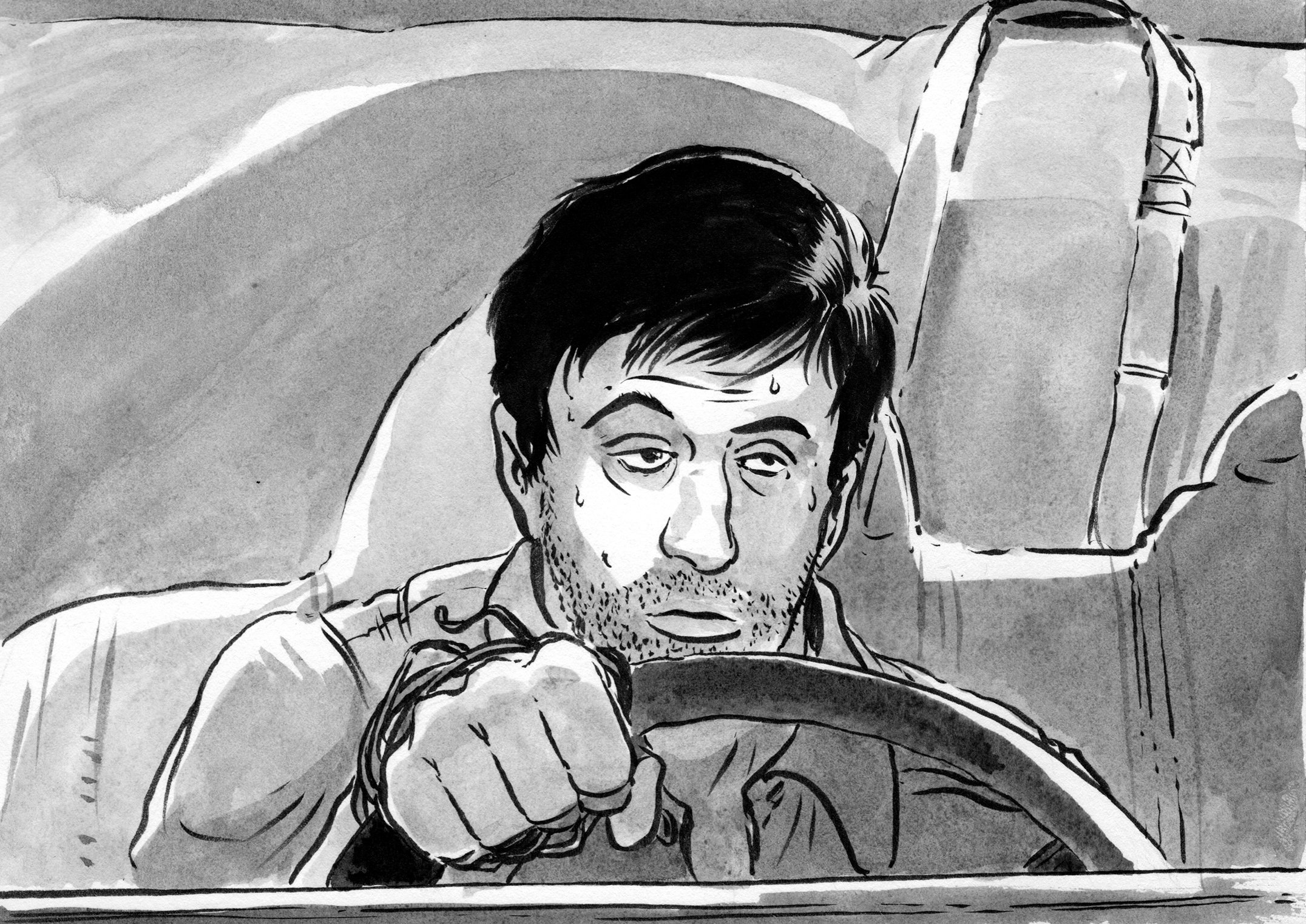
la sed
EDEN ROAD
martin kessler
The story is simple enough. During a time of war, a battalion of soldiers are in dire need of
water. A convoy of water trucks and their brave drivers are sent to relieve the battalion.
Gradually the convoy is whittled down by misadventure through the perilous terrain until there
is just one truck left, with a hero and heroine determined to bring its precious cargo to its final
destination. They will certainly never return, and perhaps not even arrive at all.
Hijo de Hombre (Son of Man) is our destination, but I want to take the winding scenic route,
with the occasional detour. The film stands on its own, however I want to add what context I
can to it. Nothing hurries me, and nothing halts me.
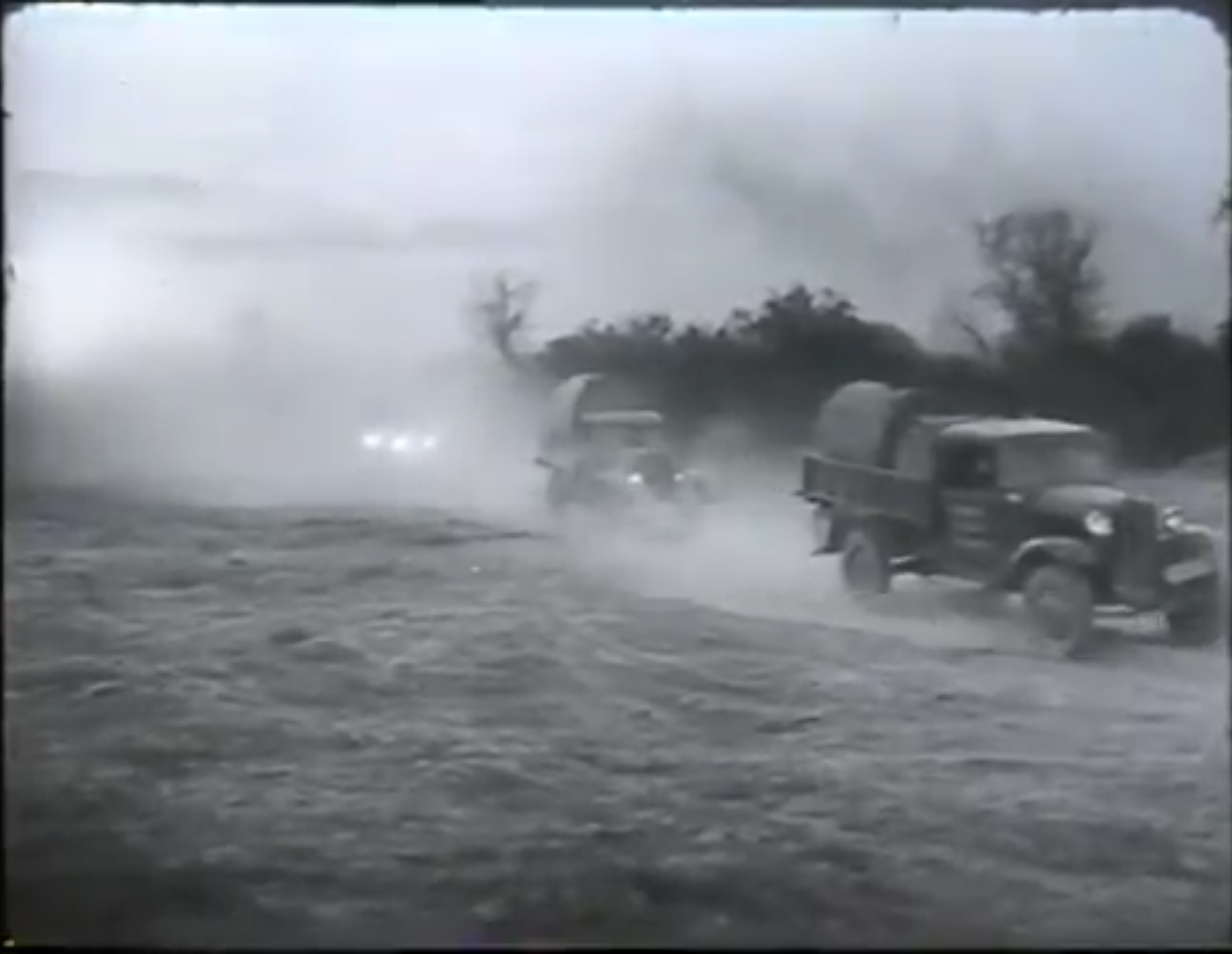
HiJO DE HOMBRE / LA SED
lucas demare, 1961.
CiNE ARGENTiNO
~ artwork by patrick horvath ~
~ special thanks to ana orsatti ~
~ written by martin kessler ~
My interest in the history of Argentine cinema is only very recent, and just a few years ago was
familiar with just a handful of Argentine films and filmmakers (like Luis Puenzo for instance). I
can attribute much of my new fascination to the one-two-punch of seeing Lisandro Alonso’s
film Jauja (2015) followed by Lucrecia Martel’s film Zama (2017). I was captivated by the pair of
poetic period films. They place their protagonists in direct opposition to landscapes as
beautiful as they are overbearing, evoking themes ranging from the colonial to the existential.
Their filmmakers are associated with the New Argentine Cinema, which emerged in the 1990s,
but for this piece I’ll be looking back at an earlier age of Argentine cinema. Without getting too
in-depth, I think it’s worth touching on the cinematic ecosystem that Hijo de Hombre emerged
from.
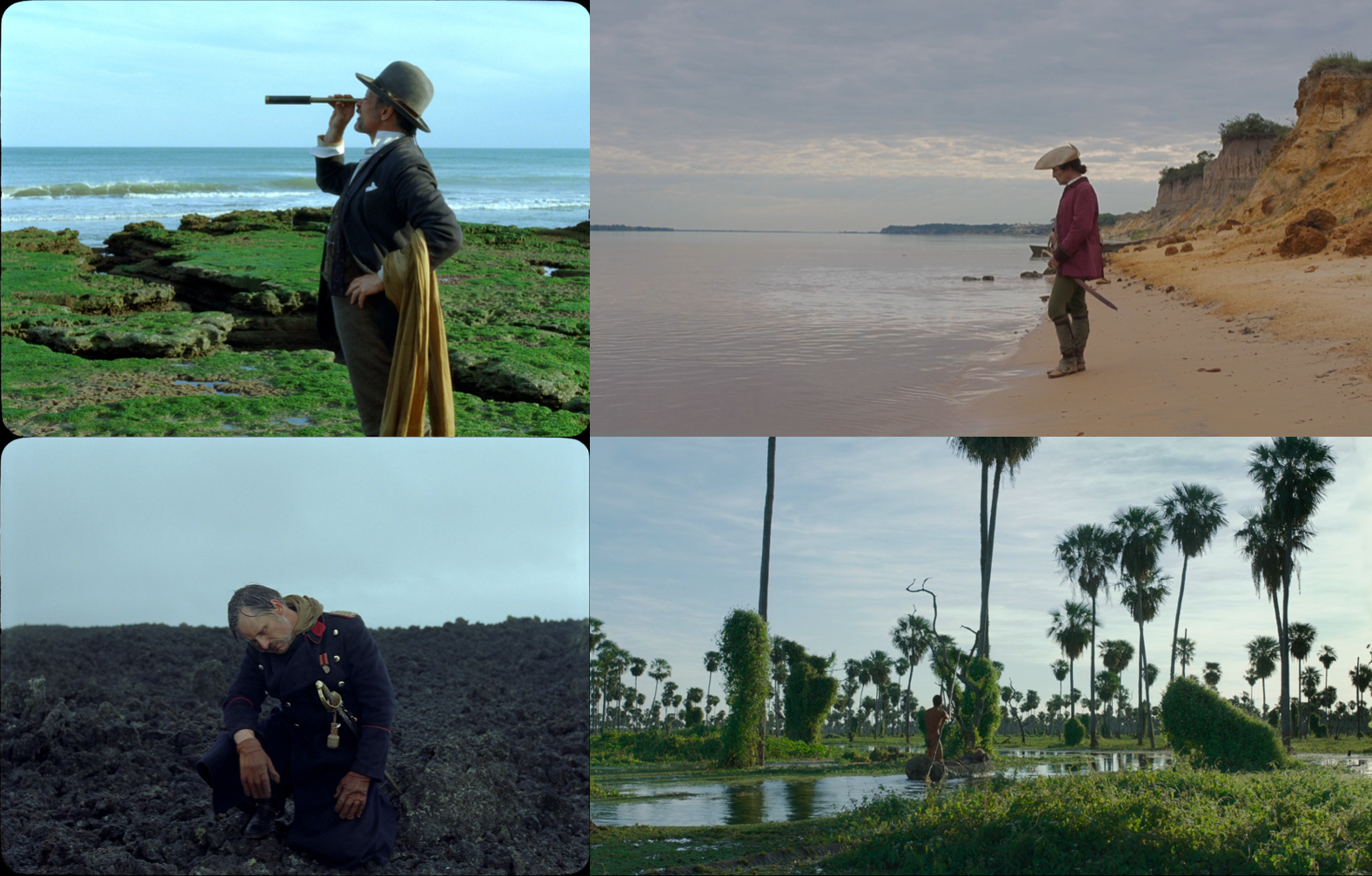
During the silent era, Argentine movie theatres were largely filled with import from Hollywood
and Europe. Argentine heroes were played on the big screen by American actors, like Douglas
Fairbanks in The Gaucho (1927).
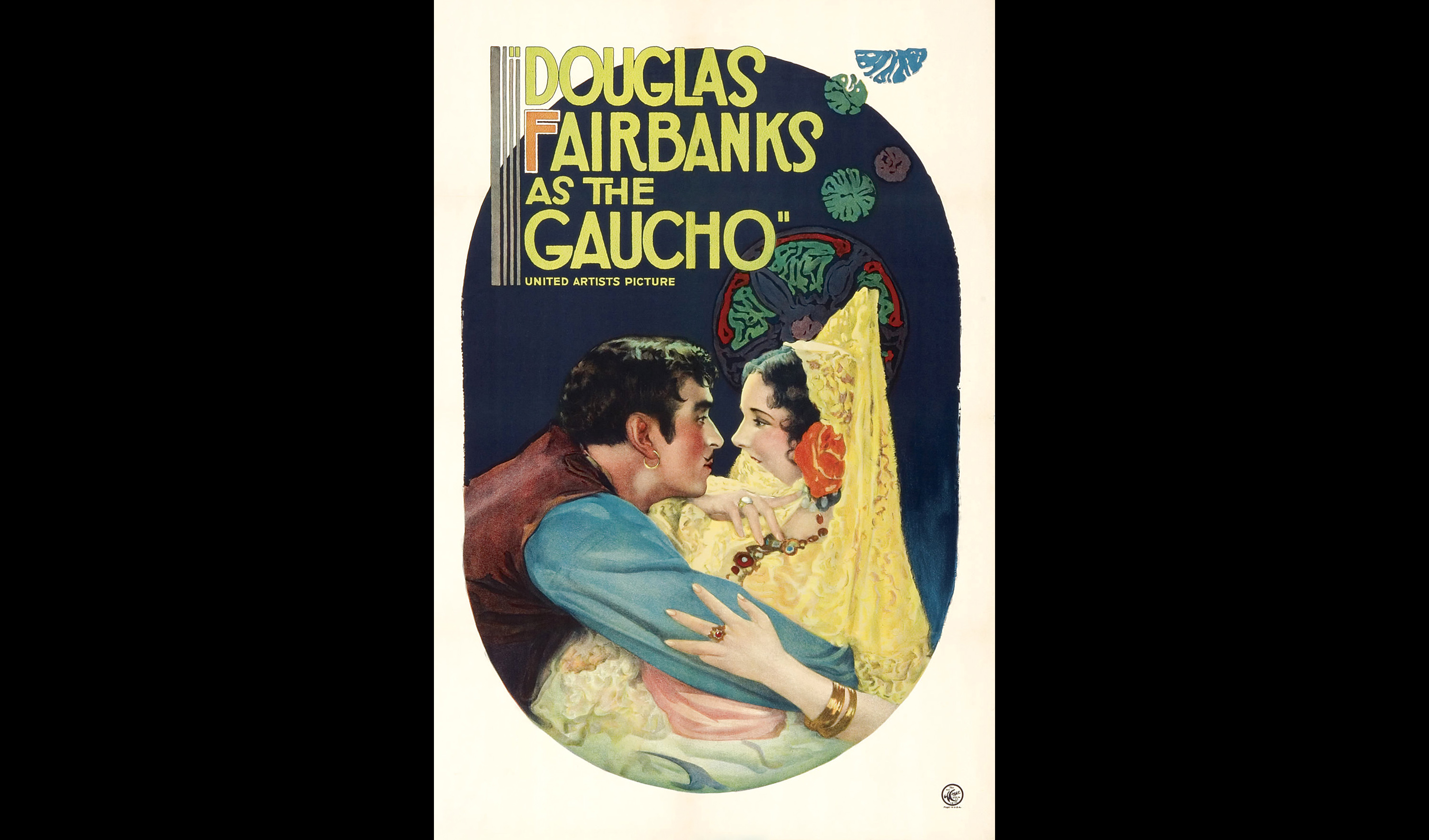
There were of course silent Argentine films (Nobleza Gaucha being a much-celebrated early
example), but the introduction of sound allowed Argentine cinema to flourish. With sound
Argentine audiences could hear movies in their own Rioplatense dialect. It ushered in what’s
generally referred to as ‘The Golden Age of Argentine Cinema’. The industry grew rapidly, and
during its peak was the most productive and lucrative film industry in Latin America. For
instance in 1942, there were 56 feature films produced in Argentina, eclipsing Mexico’s 42.
An advertisement for the Libertad Lamarque vehicle Tango! (1933), the first Argentine film to
use optical sound:
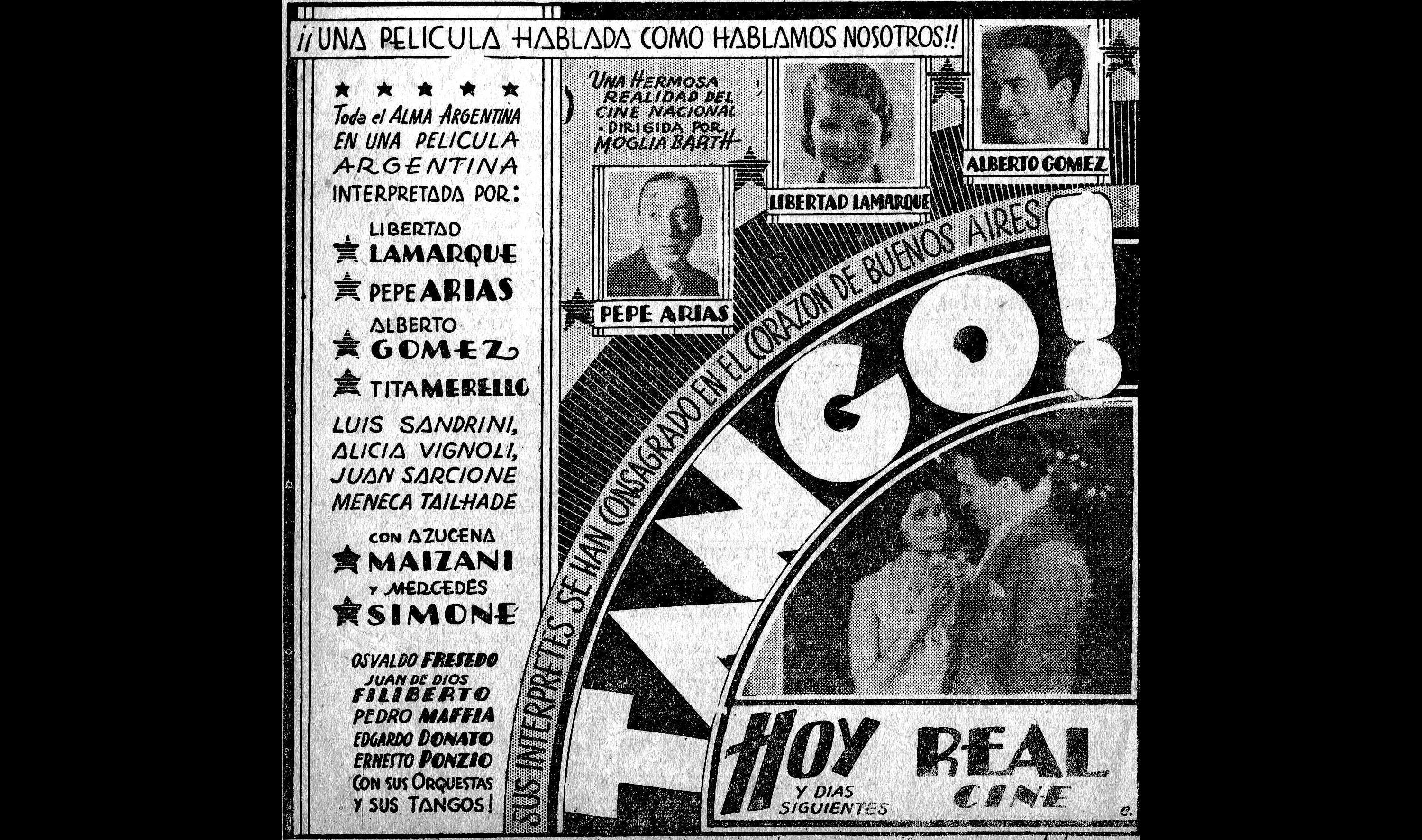
It wasn’t always steady going, and there were dips in production during The Golden Age. The
largest one came during the latter half of the Second World War. A U.S. embargo on the
country included raw film stock, which ground the Argentine film industry to nearly a halt. The
main American rational was to prevent the officially neutral, but Axis-friendly nation from
potentially producing pro-fascist propaganda films. Set visits during the war from high ranking
Nazi propagandists isn’t exactly a good look. Another motivating factor was the conscious
push for the American film industry to have a greater foothold in Latin America, apparently a
market that often resisted the export of Hollywood films. I guess it shouldn’t be surprising that
American meddling in Latin American affairs would extended to film. A product of that initiative
was one of Orson Welles’ many never-completed films, It’s All True, shot in Brazil while The
Magnificent Ambersons (1942) was being butchered back in Hollywood.
From left to right: Argentine film director Alberto de Zavalía, Argentine actress Libertad
Lamarque, the wife of the American ambassador to Argentina, and Orson Welles:
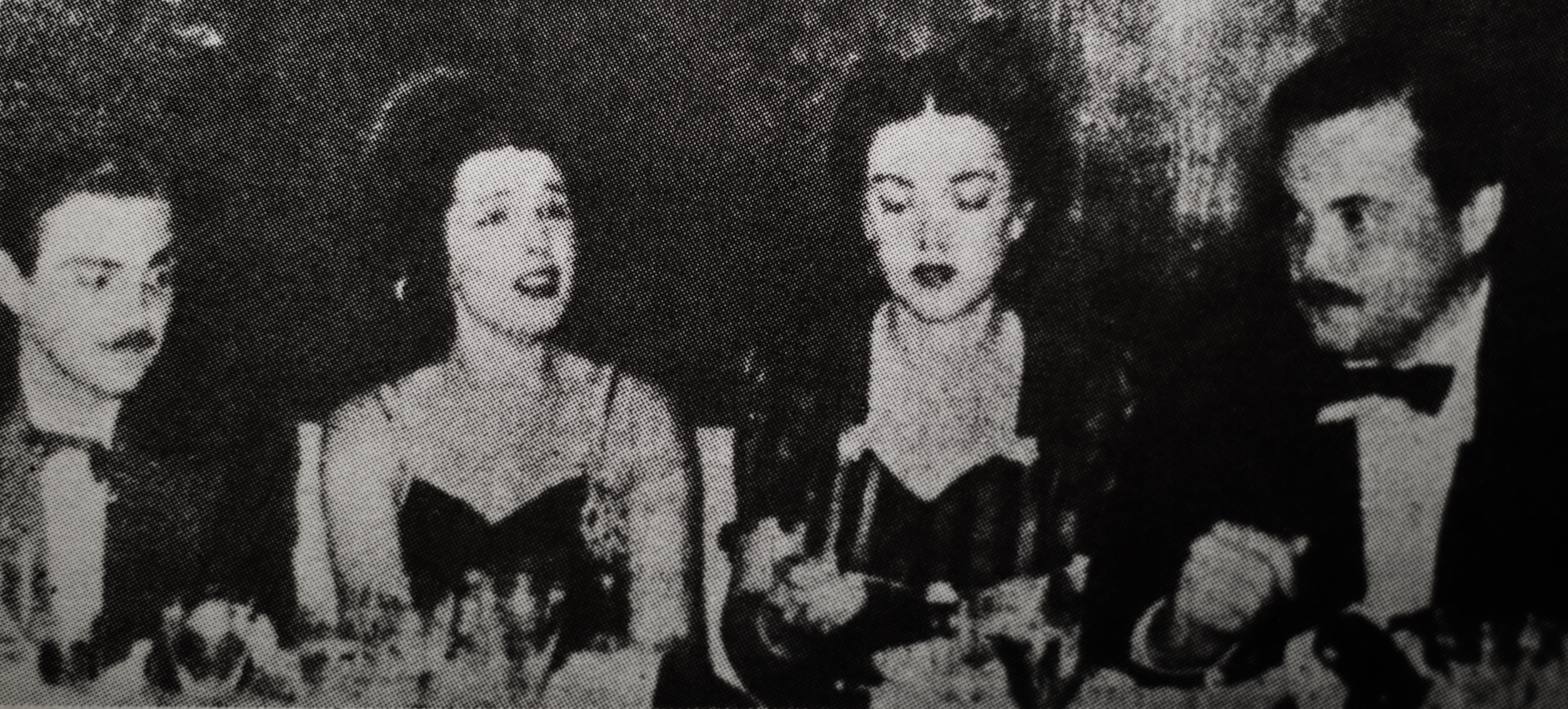
Still, the Argentine film industry rebounded after the war and continued strong - for a little
while, at least. Eventually it settled into a gradual decline due to a faltering economy. Hijo de
Hombre, the film I’m building up to, was released in 1961, which would put it at the very tail
end of the era.
I was disappointed to find how little was written in English about the films of that remarkable
golden epoch, with a number of critics and scholars in the 1980s and onwards writing off the
entire period for being too bourgeois and full of sterile aestheticism. Instead many of them
favour the socialist realist films that began cropping up in the 1960s, focused on poverty and
misery. I have nothing at all against those films, but it’s a clear trend of North American and
European film critics being enamoured with them. Some view those films as being in artistic
opposition to the sorts of movies that marked the Golden Age of Argentine cinema. Others
don’t acknowledge that there was anything before at all, as if South American cinema simply
didn’t produce anything worth mentioning at all before Cinema Novo (the Brazilian new wave). I
mean, I kind of get it... movies about love triangles and the Tango seem frivolous when put
next to something like Brazilian filmmaker Nelson Pereira dos Santos’ Vidas Secas (1963), a
Naked Island-esque masterpiece about a poor family forced to kill their beloved dog to avoid
starvation.

Nonetheless, I think devaluing an entire era of filmmaking is their loss. I’m sure Argentina had
its share of out-of-touch “white telephone” movies, just as film professor Tim Barnard points
out in Popular Cinema and Populist Politics (linking them to the semi-propagandistic Italian films of the Fascist era), but watching a
number of the films for myself paints a different picture. Classic Argentine cinema is full of
imagination and exuberance; tragic romance stories, great gaucho western epics, elaborate
tango musicals, hardboiled crime stories, crowd-pleasing sports dramas, stylish horror stories,
and melodramas with a flair for the erotic. Watching several in a row, I’m overwhelmed by the cinematic resplendency of it all. I feel a little like Salvatore at the end of
Cinema Paradiso… or if I wanted to use a specifically Argentine example instead, there’s a
similar scene in Leopoldo Torre Nilsson’s The House of the Angel (1957) where the main
character Ana goes to the cinema.
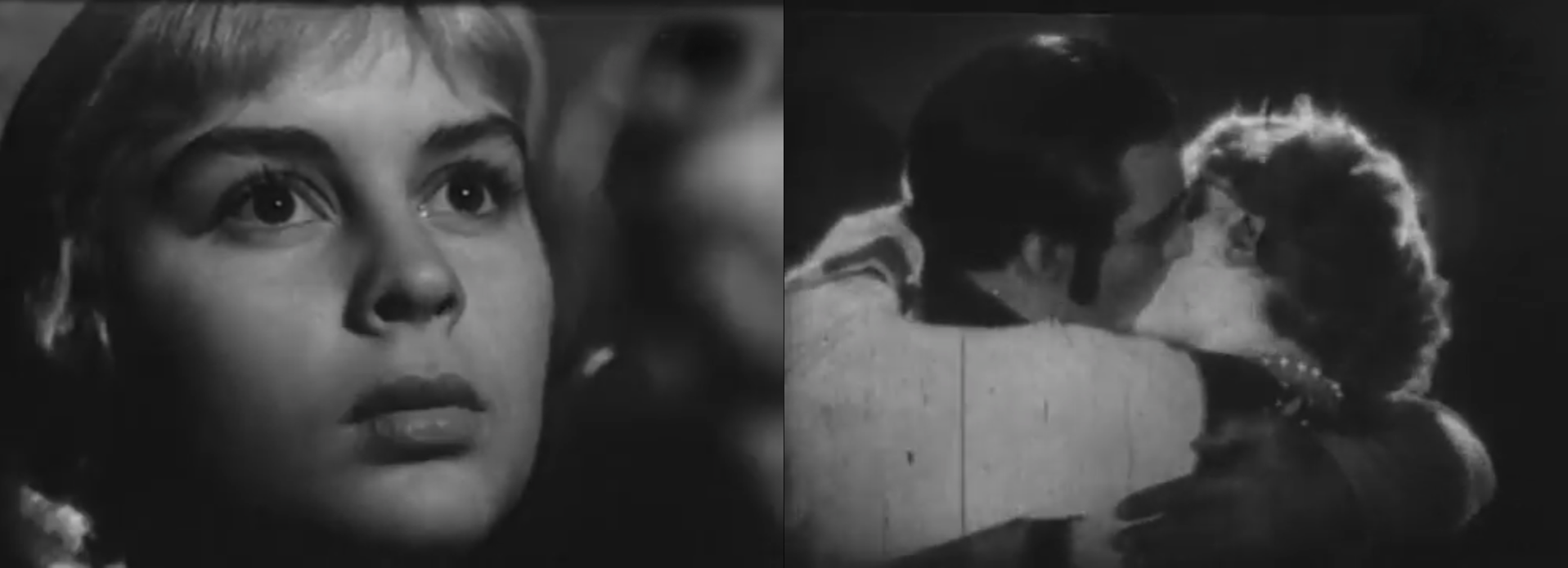
Films were a point of pride for the nation. The prominent Argentine film critic, Domingo Di
Núbila describes Argentine cinema of that time as “national, but not nationalistic”. The films
made a point of asserting Argentina’s independence on the big screen without treading into
jingoistic territory. It might be worth reminding people who haven’t seen the Madonna musical
lately, that Argentina’s most famous first lady, Eva Perón (formerly Eva Duarte) was an actress,
though the more I actually see of her acting the less I’m convinced that she had any
appreciable acting talent whatsoever. There are also persistent rumours of her using her
political influence to have certain actors blacklisted, but forget I even mentioned that.
A 1938 Argentina Sono Film studio publicity ad proclaiming “Be Patriotic! See Argentine
Movies!”:
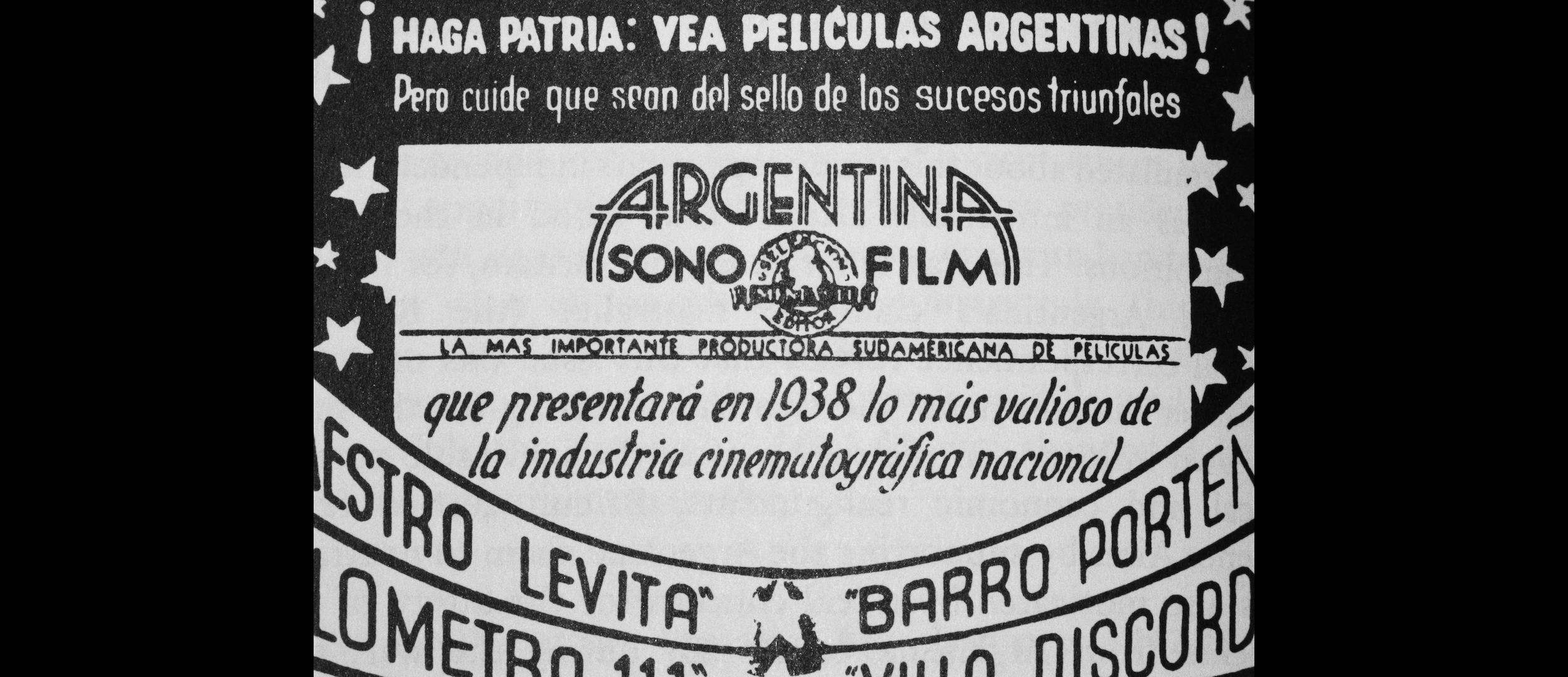
Regardless of the patriotic tenor around classic Argentine cinema, the films themselves have a
decidedly international flavour to them. I know there’s at least the stereotype of Argentines
thinking of themselves as ‘more European’ than other citizens of South American nations. At a
Q&A following a screening of Zama that I attended at the New York Film Festival, director
Lucrecia Martel suggested that perhaps Argentines don’t think of themselves as a part of Latin
America, and instead fit in somewhere between ‘Paris and Florida’. I took the implication of her
statement to mean a sort of blend of high culture with sweaty vulgarity. With my stumbling
through classic Argentine cinema, I get at least an impression of what she may have been
describing, with films that are examples of both an effort to imitate and compete with the
polished output of classic Hollywood, while also being clearly influenced by the poetic realism
and neo-realism of European cinema. The blending of the two is less awkward then the
unacquainted might expect. For instance one film I watched recently was the outstanding 1953
soccer melodrama, El Hijo del Crack (1953). It starred Argentine actor/producer Armando Bó,
and was directed by Leopoldo Torre Nilsson and his father Leopoldo Torres Ríos (the younger
of which would become more prominent the following decade). It comes across a little like
splitting the difference between Knute Rockne, All American and Bicycle Thieves.
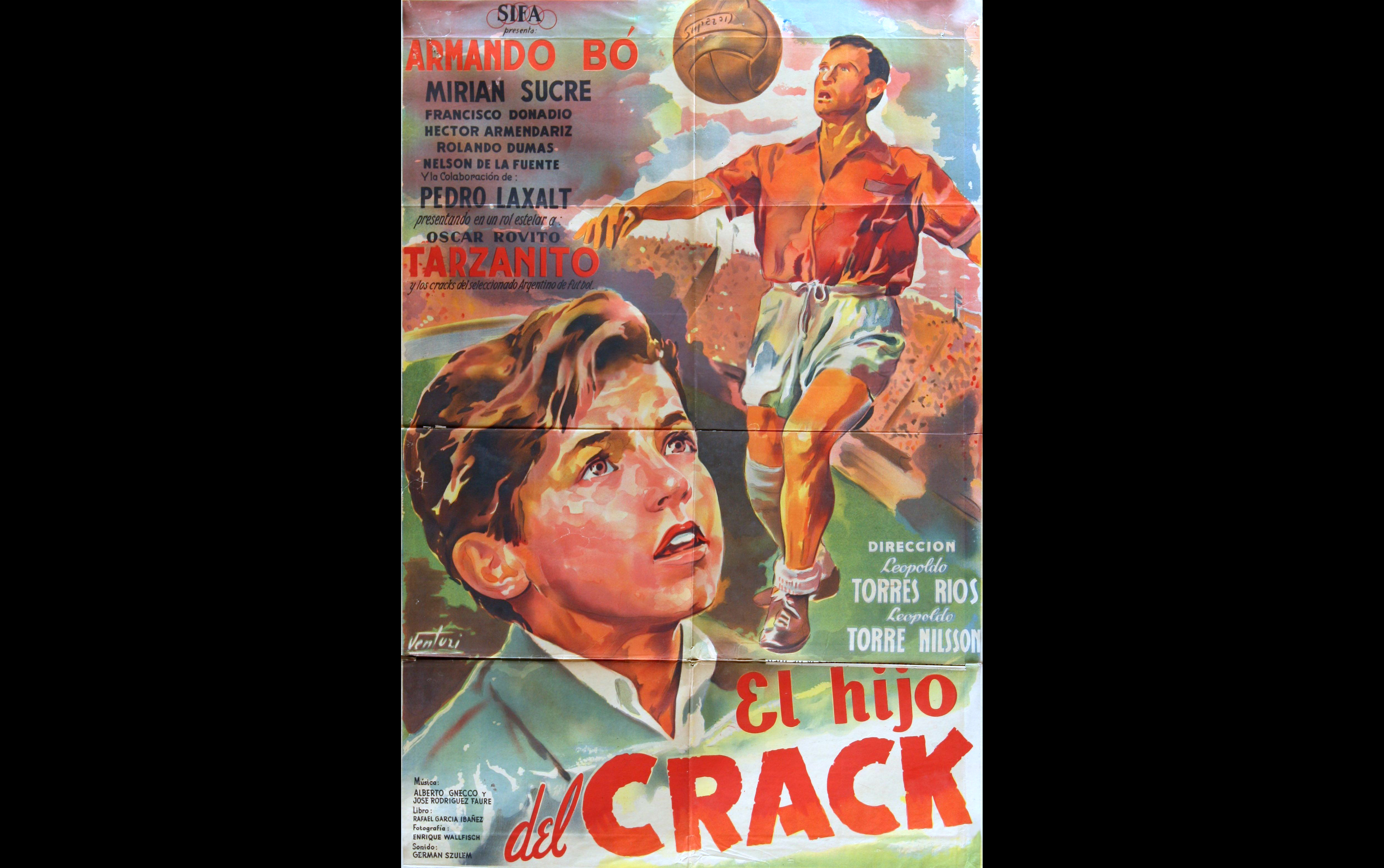
International influence on Argentine cinema wasn’t limited to the stylistic either. Exploring
Argentine cinema, I’d often run across films based on works by international authors including
Tolstoy, Wilde, Chekov, Ibsen, Flaubert and Schnitzler. Apparently in an effort to counter-act
that, in 1947 General Perón legislated that a minimum of ten percent of all films had to be
based on Argentine stories. While Hijo de Hombre is an Argentine film production, it’s neither
Argentine in its subject nor its origin.
THAT MAN FROM PARAGUAY
The film is based on a novel by Paraguayan author and poet, Augusto Roa Bastos. In addition
to writing in Spanish, Roa Bastos would often include words and phrases in Guarani, (a widely
spoken language of Paraguay’s indigenous population) which Roa Bastos had learned in his
youth growing up on a rural sugar plantation. He had written poetry and short stories leading
up to it, but Hijo de Hombre was his first novel.1 Roa Bastos said that he had originally set out
to write Hijo de Hombre as a short story, but failed when its scope spiralled into something
larger. The novel is really a collection of nine stories (bumped up to ten with Roa Bastos’
revised 1982 edition of the book).
The stories have some overlapping or related characters,
and blend religious allegory (often ironically) with realism informed by Roa Bastos’ own
observations and experiences. They take place in Paraguay and span from about 1910 to
1936. That includes the war the film is set during, The Chaco War (1932 - 1935).
The Chaco War is also known as The War of Thirst, and it was between Paraguay and
Bolivia.2 Those nations fought for control over the Chaco Boreal; an inhospitably dry lowland
where thirst proved to be as deadly as bullets.
In the film, one soldier begs to be able to drink
the piss of his companion, just to alleviate his thirst. The novel further elaborates:
We have lost all hope that the water trucks will come, and all hope of escaping from this
clearing, which we have gone through much effort to defend. The strongest of us could not
walk a hundred paces without collapsing. The air has evaporated the last drops of our sweat,
and even dried up our tear ducts. Anyone who has managed to keep some urine in his bladder
can consider himself lucky. There is brisk traffic in that liquor... Only a miracle can save us. But
in this accursed Eden, no miracle is possible.
One of the reasons most often pointed to for why that mercilessly dry region was fought over
was because it was believed then, that it was home to massive oil reserves. The situation was
exasperated by the interests of the U.S.-based Standard Oil Company, the company that
would inspire the fictional/satirical SOC, Southern Oil Company in Henri-Georges Clouzot’s
doomed trucker classic, The Wages of Fear (1953). Time would reveal that there was no oil to
be found there.
Augusto Roa Bastos had experienced The Chaco War firsthand as a stretcher bearer and
auxiliary medic, joining up when he was only fifteen years old. His experience with the
wounded and the dead left him to wonder, "why two brother countries like Bolivia and
Paraguay were massacring each other”. That experience was formative in his pacifist outlook,
and his austere (bleak even) humanism. It would only be reinforced by his time spent as a war
corespondent in France during the second World War.
Yet another war, The Paraguayan Civil War, caused Roa Bastos to flee to Argentina. There his
writing and his criticism of Paraguan dictator, General Alfredo Stroessner, would eventually
earn him the label of “subversive figure” back in his home country and ensure his exile for the
next four decades. Hijo de Hombre would be taught in Paraguayan schools before Roa Bastos
was permitted to return to his homeland.
After relocating to Buenos Aires, Roa Bastos had several odd jobs to get by, including work as
an insurance salesman and as a radio host. He had an affinity for film, and his skill with words
eventually managed to find him some work as a screenwriter. The first movie he’d write was the
provocative Thunder Among The Leaves (1957), which he adapted from one of his own short
stories that would be collected in a book also called Thunder Among The Leaves. The film was
a vehicle for actor/producer, and now director, Armando Bó, who seems to have made it his
goal to act with his shirt off for as much of the film as possible.3 It’s noteworthy for kicking off
the twenty film-long collaboration with Bó and his muse (and purportedly mistress), actress
Isabel Sarli.
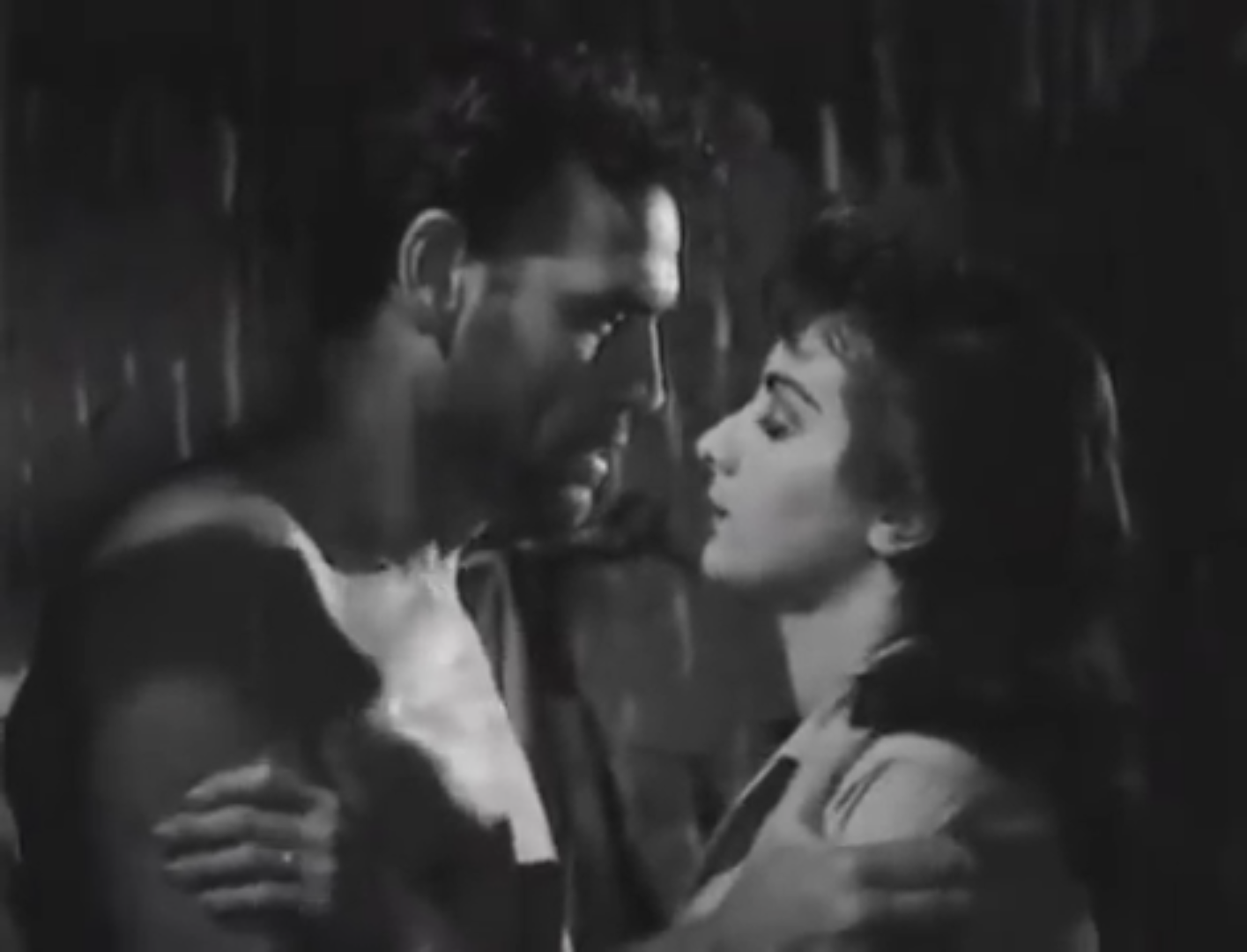
Thunder Among The Leaves is a very good film, full of stark imagery and poignant subtext, but
it also foreshadows the sexploitative direction that Bó and Sarli’s movies together would
gradually take. The film was heavily influenced by ...And God Created Woman (1956), and there
seems to have been a conscious effort to market Sarli as Argentina’s very own Brigitte Bardot-like
sexpot. The most famous scene in the film is of Sarli bathing nude. A lack of formal
censorship in Argentina allowed for that sort of artistically daring content, which would have
been prohibited in many other countries at the time. The bathing scene was controversial, but
almost certainly played a role in the film’s success, with Thunder Among The Leaves being the
most financially successful Argentine film ever made at that point in time.
Roa Bastos would write a follow-up film for Armando Bó & Isabel Sarli, titled Sabaleros (1959).
It would feature even more scenes of Sarli bathing in the nude and bare-chested Bó, and
would also prove successful (both commercially and critically), but after that Roa Bastos would
part ways with the movie star duo, and move on to other film projects.
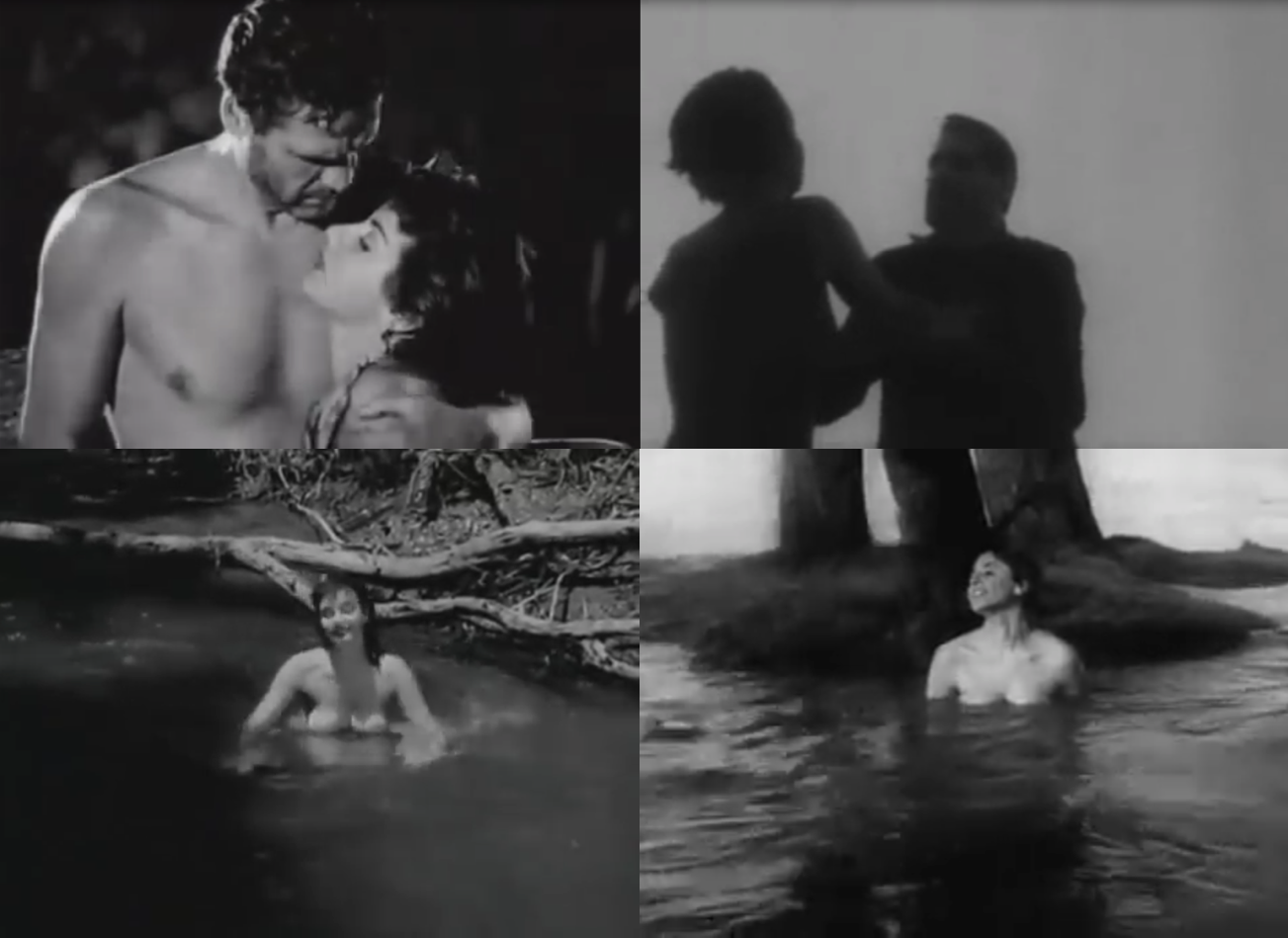
Roa Bastos’ screenwriting career would eventually culminate in Hijo de Hombre. He, himself
would write the screenplay for Hijo de Hombre. In adapting his novel to the screen, Roa Bastos
selected two chapters, entitled "Destined" and "Mission." Most sources refer to the film as an
adaptation of Mission exclusively, though in reading the novel it’s clear that elements from the
preceding chapter Destined were incorporated into the film. At first the stories in each chapter
seem very different. For instance "Destined" is told in the first person, while "Mission" is told in the
third person. However, in reading them back to back, it becomes clear that they are parallel
stories that connect by the end.
The story of "Destined" is about a man who finds himself in command of a battalion of soldiers,
who he ultimately sees die slowly and horribly of thirst. It ends with him losing his mind and
tempting death by firing his machine gun at a truck that appears. The story of Mission is about
a driver and a nurse who are part of a dwindling convoy of water trucks sent to relieve a
battalion of soldiers. The drivers are called “aguateros”, referring to the ancient profession of
water-bringers, often depicted carrying jugs of water on their back. It isn’t until you reach the
end of "Mission," and the hero is tragically machine-gunned to death, that you realize the shooter
was the delirious-with-thirst protagonist of Destined!
Don’t worry, I’m not slapping you with the end of the film right away. That parallel narrative
structure from the novel was jettisoned for the film in favour of something a little more
conventional. It doesn’t conclude with the main character being murdered by one of the men
he tried to save. The film’s ending isn’t upbeat or lacking in depth either though. I’ll get to the
ending when it’s more appropriate (like near the end of the article), but I just want to give some
sense of the material that the filmmakers were working from.
The paring down of the book’s stories is likely why the film and its accompanying posters
feature a bracketed “Choferes del Chaco” in smaller text under the tile. Meaning “Drivers of
Chaco”, it likely would have communicated to audiences familiar with the book, that the film
only intended to focus on just 'that story about the truck drivers’, rather than be some
sprawling saga that tried to incorporate everything.
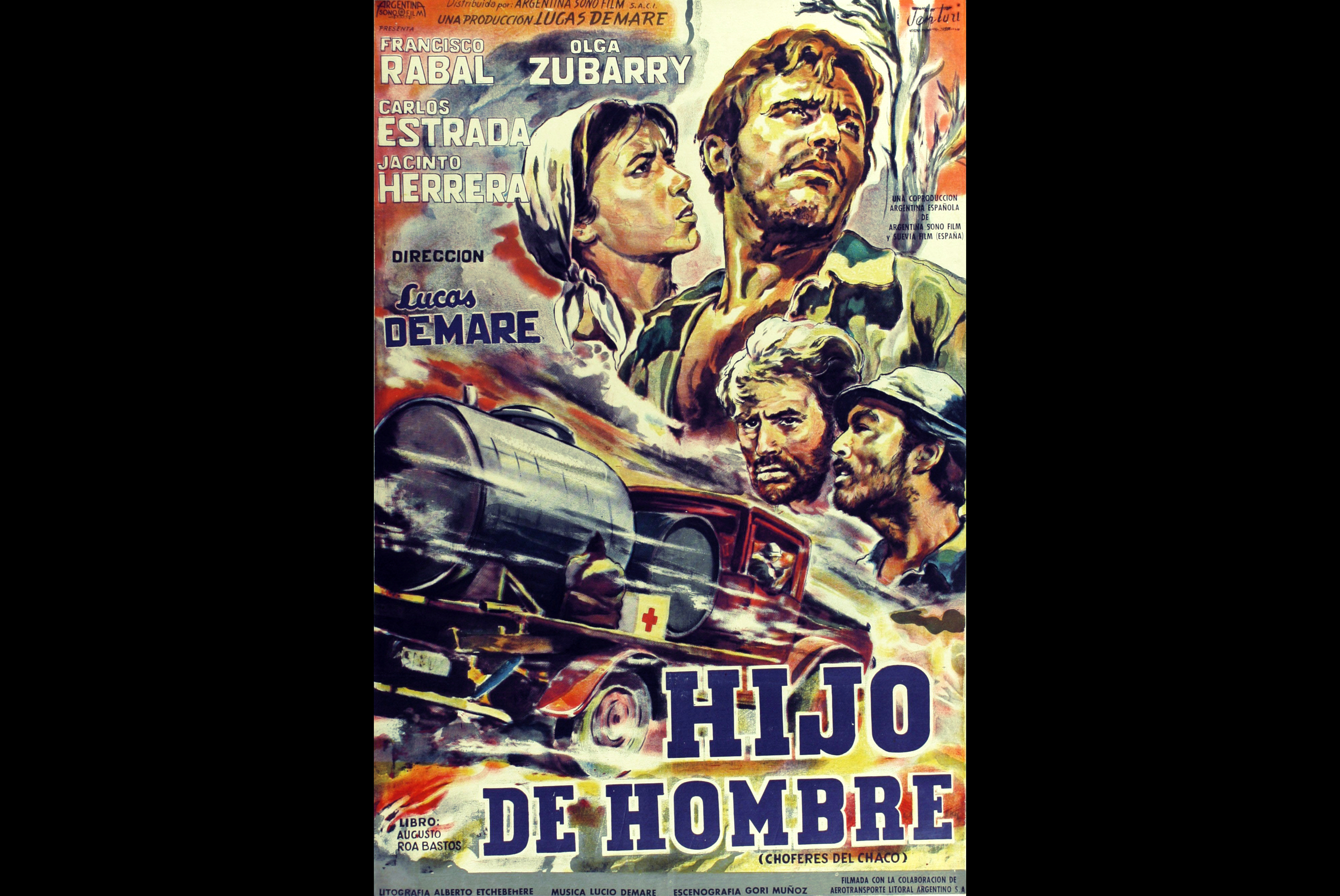
While I’m discussing titles, I should explain why the film also goes by the title of La Sed (The
Thirst)...
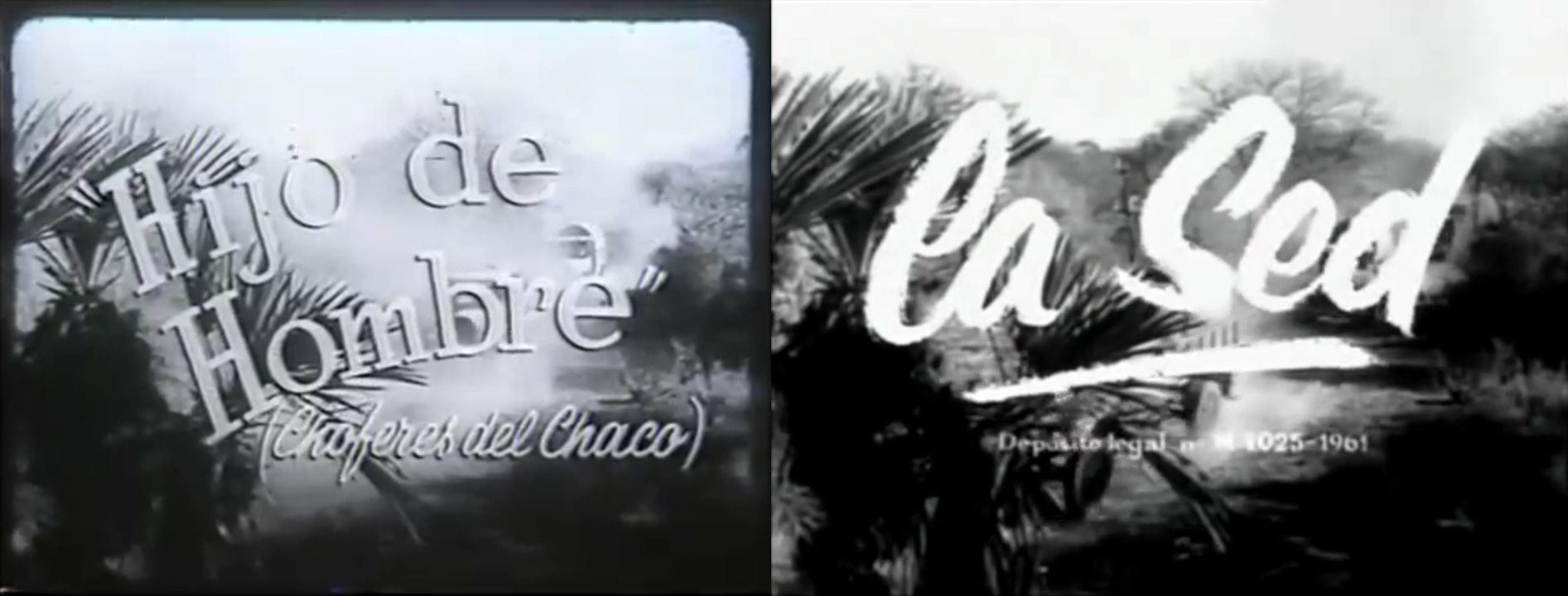
Actually, not only does it have multiple titles, but multiple versions. La Sed was the European
release title, and despite being the more widely seen version of the film (with other European
releases using it as their basis), it’s also generally considered the inferior version. La Sed is
about two minutes shorter than the Argentine cut, mostly excising some sexually provocative
moments that would have been unwelcome in Franco’s Spain. It’s less drastic than the 35-
minutes or so cut from The Wages of Fear for its American release, but still a hinderance.
Even more noticeable were the changes made to the film’s audio. The film’s dialogue was dubbed
over to eliminate the dialects of the original cast, out of concern that they were too difficult for
audiences in Spain to understand. Two Spanish writers, Emilio Canda and Antonio Cuevas
(who later abandoned writing altogether to become a successful producer) wrote the
translation, and there’s a consensus that the poetry of Roa Bastos’ dialogue was lost.
Fortunately, Roa Bastos’ dark poetry can still be found in any version, because it was woven
into the visuals of the film by its director.
HORSEPOWER
Direction of Hijo de Hombre fell on the sturdy shoulders of Lucas Demare. It was made towards
the end of his most productive period as a filmmaker which began in the late 1930s and
slowed down toward the end of the 1950s, not coincidentally overlapping with The Golden Age
of Argentine Cinema. He had a reputation as a true workhorse, and directed forty films (thirtyfive
of them feature-length) over the course of his career, covering a wide variety of genres
including musicals, melodramas, adventure stories, and westerns (the most famous of which,
Savage Pampas would be remade in English). He was intelligent and worldly, but unpretentious
and well known for his ‘common touch’. He said that he preferred to direct while dressed only
in “shorts and short boots”, and it’s not uncommon to see behind the scenes photos of him
directing on location shirtless with a viewfinder hanging from his neck.
Lucas Demare was born in Buenos Aires, and had initially been trained as a musician, playing
the bandoneon (a type of concertina), in the prestigious Tango Orchestra of Argentina, which
his famous older brother Lucio Demare would eventually be a conductor and composer for.
Lucas Demare found his way into the film industry through music, tagging along when his
brother was hired to perform in the now-lost Spanish musical film Boliche made in 1933, which
Lucio Demare received third billing in.
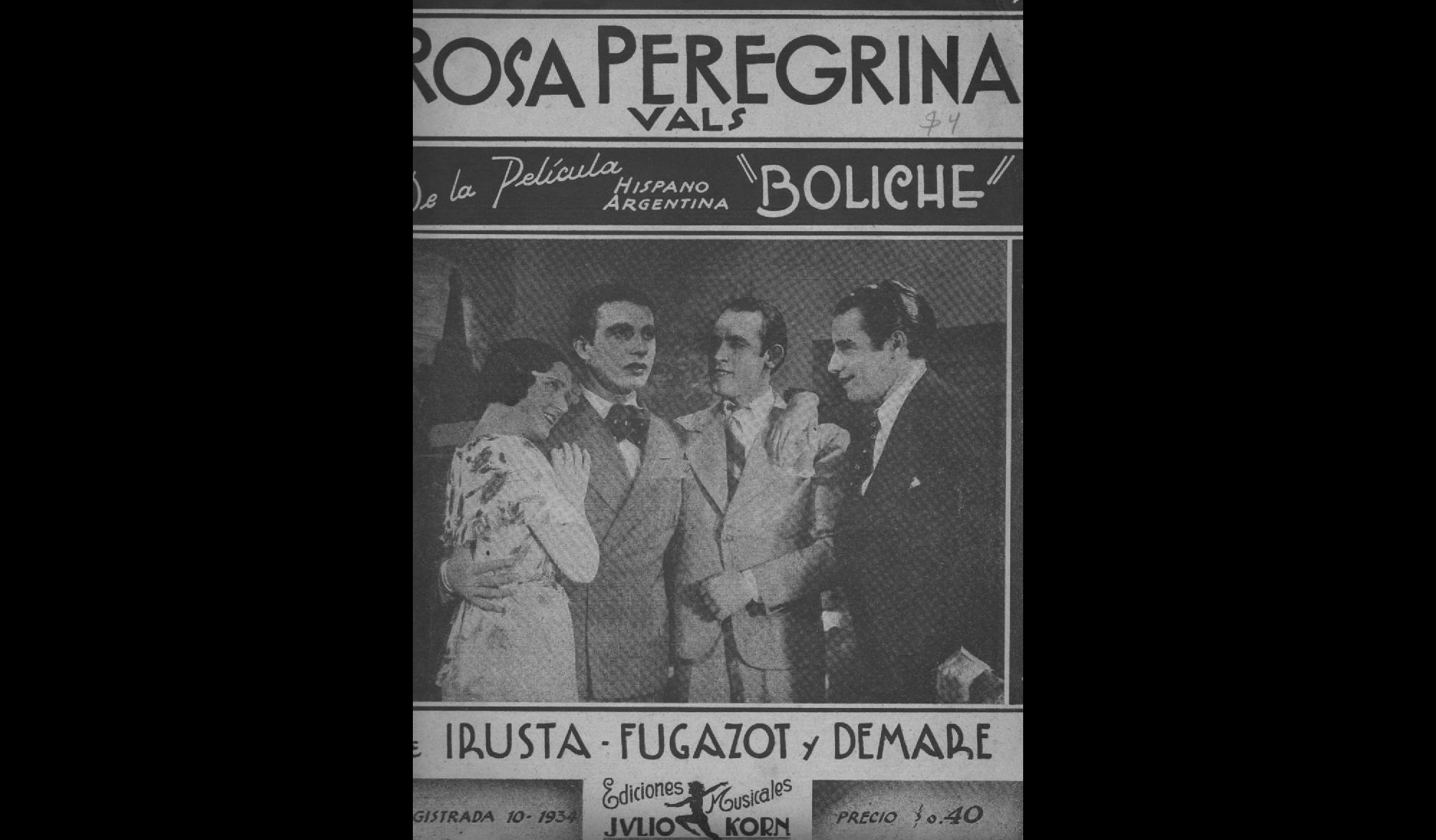
After his bit part in Boliche, Lucas Demare decided to leave behind music in pursuit of a career
in film. He’d work as a production assistant, slater, or third assistant director on Spanish film
productions, often without pay so that he could study the technical side of filmmaking. After a
few years he had worked his way up to second assistant director, and was set to make his
directorial debut in Spain. He purchased the rights to Àngel Guimerà’s play Martha of the
Lowlands intending to film it in 1936, but the outbreak of the civil war forced him to return
home to Argentina. 4
In 1937 Lucio managed to hook his younger brother up with a job as the floor manager at Río
de la Plata film studios, and the following year Lucas would make his debut as a film director
with the romantic comedy, Two Friends and a Lover. It starred his future wife, Norma Castillo.
There’s a white telephone in it, but I’m not sure if it qualifies as one of the “white telephone”
movies that professor Tim Barnard decried. Lucio would compose some of the music for that
film, and continue to work with his younger brother, composing the scores to many of Lucas’
films, including Hijo de Hombre. I think to its detriment, the La Sed release of the film replaces
Lucio’s music with a more conventional score by Spanish composer Manuel Parada.
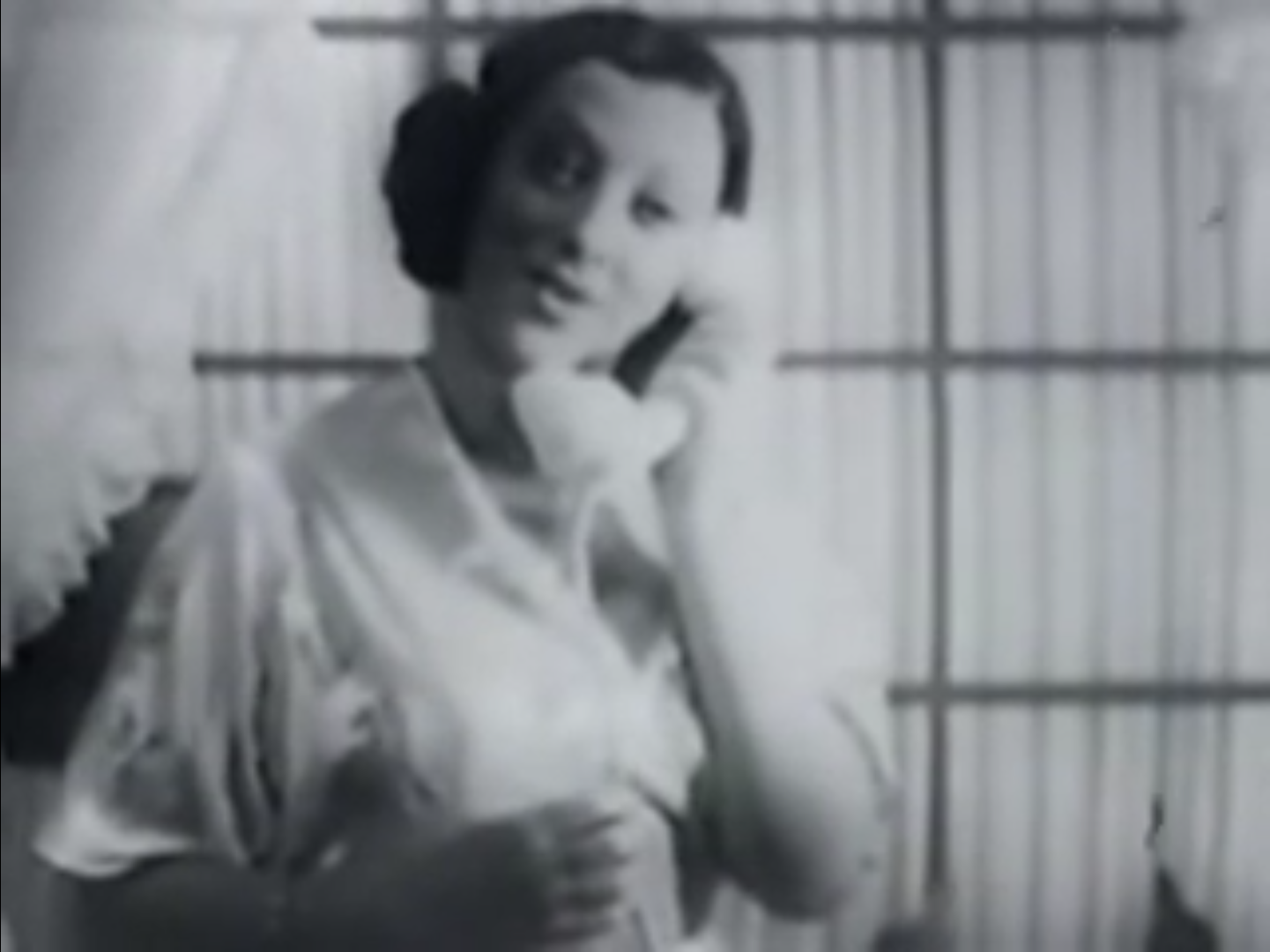
Demare’s name may not mean all that much to people reading this, but he was one of the most
respected Argentine filmmakers of his day. Three of his films would compete in the Cannes
Film Festival - Los Isleros (1951), El Último Perro (1956), and Zafara (1959) - though none would
win big. Demare was ubiquitous enough with classic Argentine cinema, that I nearly overlooked
that his name is on the cover of my copy of Argentine Cinema (published in 1984, the first
English language book on the subject) hidden in plain sight on the poster for his film La Guerra
Gaucha (1942).
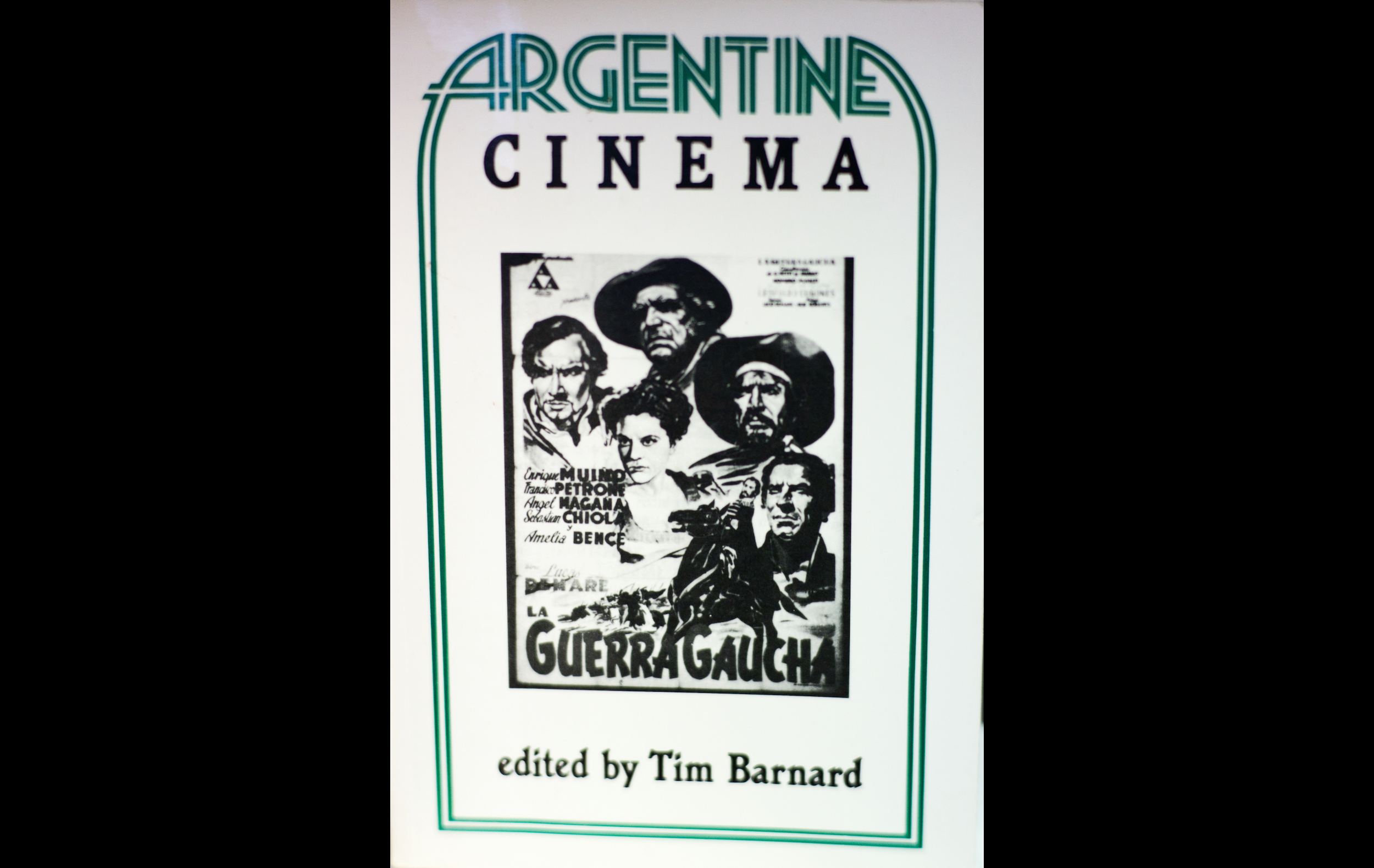
Demare intended to shoot Hijo de Hombre on location in the Chaco Boreal in Paraguay, using
the real places the story is set in, and utilize an old Cacho War military barracks to house the
cast and crew. However, after a gruelling 15-day location scouting process, it was decided that
it would have been more or less impossible to transport and take care of the hundred or so
people and all the equipment required to make the film. At least Demare left with a feel for the
place. He settled instead for shooting in the northern Santiago province of Argentina as a
substitute for the dry Paraguayan region. It’s certainly a more geographically accurate
substitute than southern France being transformed into South America for The Wages of Fear.
Apparently Santiago was similar enough to the Chaco Boreal, that when Hijo de Hombre was
released most people assumed it was shot in Paraguay anyway.
Pictured below, Southern France:
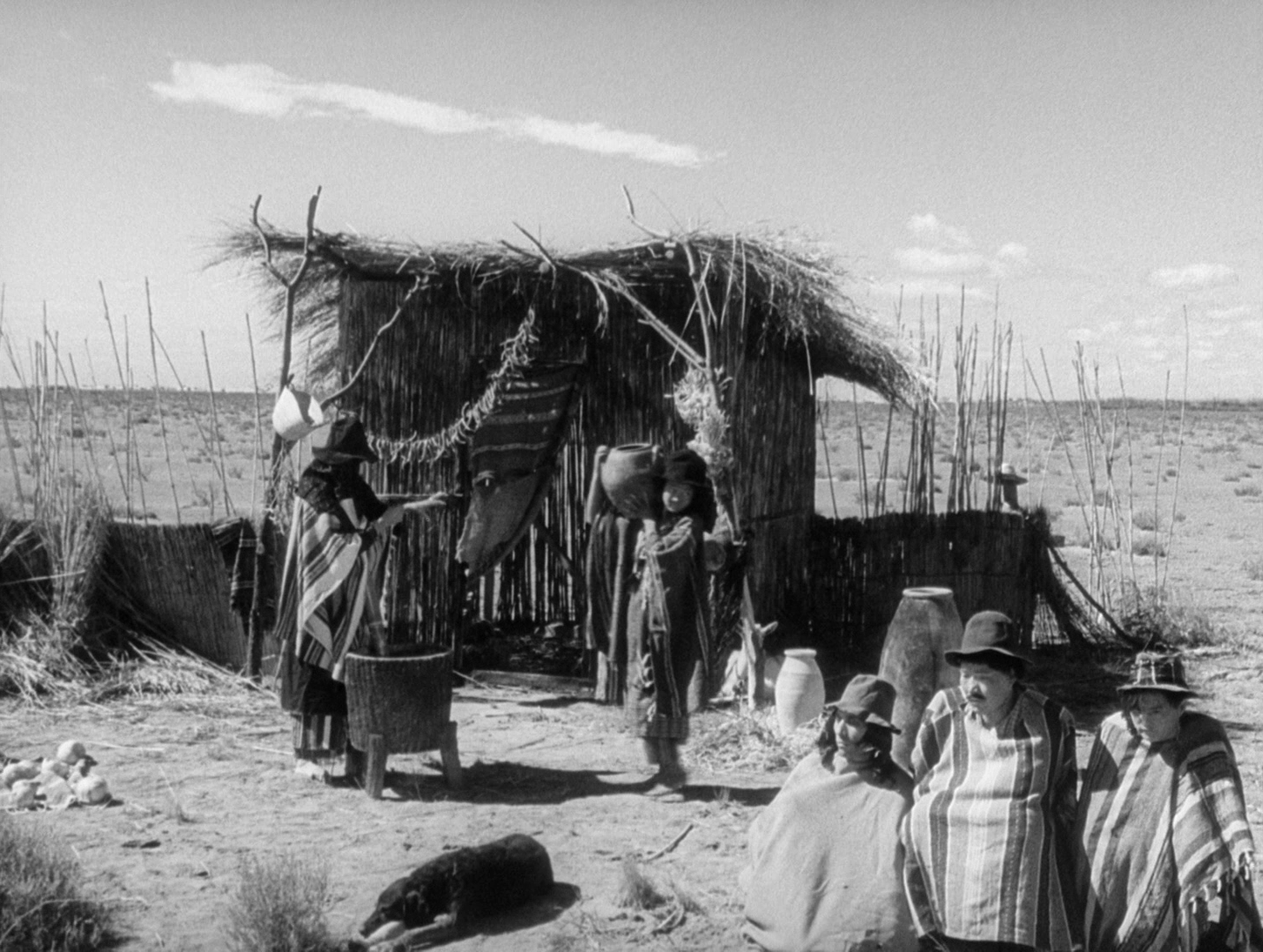
Demare’s approach to Roa Bastos’ material is straightforward but thoughtful. There’s an
understanding and faithfulness to what’s on the page. It seems as if Demare made it his
mission to carry Roa Bastos’ story like precious cargo to his audience, with as few dings and
dents as possible.
Roa Bastos had initially sold the film rights to his novel for very little (which he was never
actually paid) to an inexperienced producer, but after finding out that Demare had read the
novel and wanted to adapt it, they conspired to pressure that producer into handing back the
rights. Roa Bastos seemed to respect Demare, and would compare his style to the famous
Spanish poet Federico García Lorca, who was murdered by fascists during the beginning of the
Spanish Civil War (though for all my ignorance of Lorca, that could have been a backhanded
compliment). Demare’s treatment of the material would also be appreciated by Roa Bastos
devotees. Professor Helene Carol Weldt-Basson, a specialist on Augusto Roa Bastos referred
to Demare as a master filmmaker, and described the film as a “stunning cinematographic
accomplishment.”
Going back to what I described in Argentine films earlier, there’s a blend of classic Hollywood
and arthouse European influence on display in Hijo de Hombre. Demare has one foot firmly and
comfortably in each approach. At times Demare’s muscular artistry reminds me of Classic
Hollywood filmmakers like Howard Hawkes, George Stevens, or William Wyler. Demare himself
admitted to being greatly influenced by John Ford and Frank Capra. I think though, in the case
of Hijo de Hombre, John Huston is the Hollywood director whose name first comes to mind,
and whose Treasure of the Sierra Madre (1948) is, I think an obvious influence on the film. The
lead actor is even dressed in a way that resembles Humphrey Bogart.
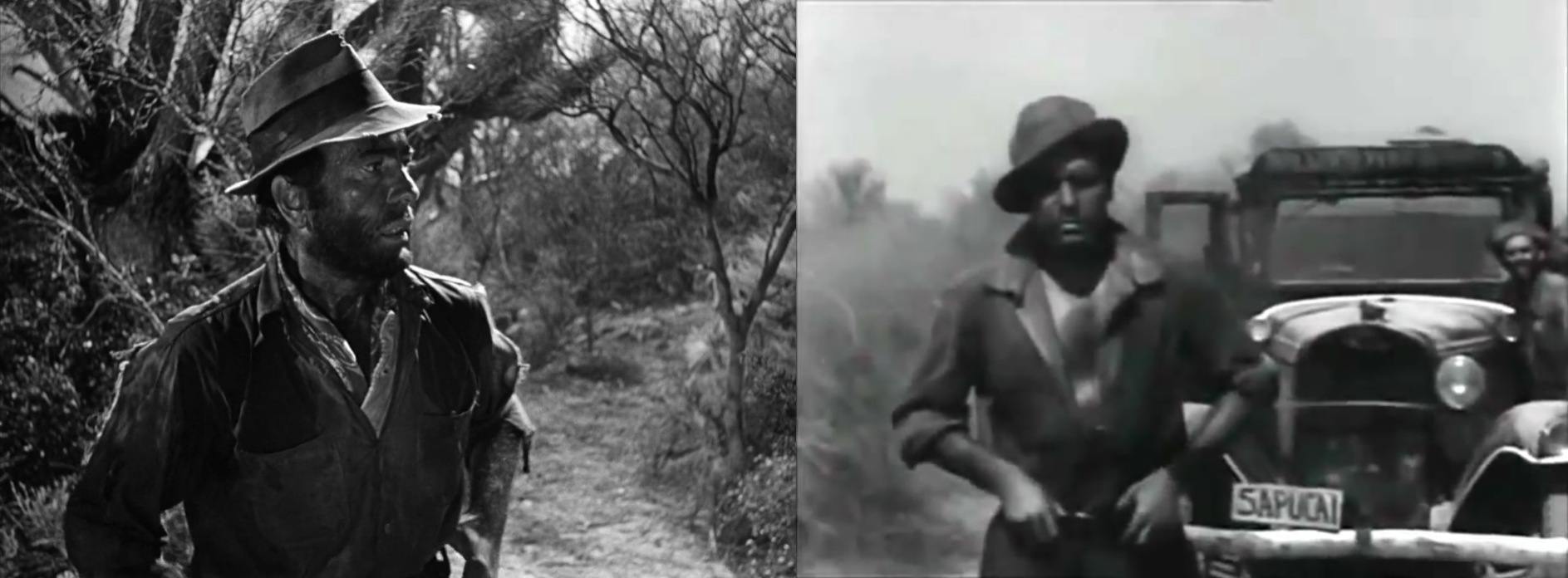
AGUATEROS
Before I get too far ahead of myself, I should mention that the lead is the great Spanish actor
Francisco Rabal. It wasn’t unusual for A-list Argentine films to bring in international talent,
usually for the purpose of making the film more marketable abroad. Hijo de Hombre was
Rabal’s immediate follow-up to Luis Buñuel’s Viridiana (1961), and I wonder if he may have
been inspired to become involved in an Argentine film by his Viridiana co-star Fernando Rey
who had experience with Argentine film productions (and had just married the beautiful
Argentine actress Mabel Karr in 1960).5 Buñuel's filmmaking was likely an influence on Hijo de
Hombre too, though it doesn’t resemble Viridiana nearly as much as it does Francisco Rabal’s
prior collaboration with Buñuel, Nazarín (1959), with its desert landscapes and subtle but
impactful visuals. I don’t know if Buñuel and Demare would have met, but both Nazarín and
Demare’s own film Zafara were in competition during the 1959 Cannes Film Festival, though
they’d both lose out to French filmmaker Marcel Camus’ beloved Brazilian endeavour, Black
Orpheus.
Hijo de Hombre also recalls Nazarín, in that Rabal again plays a would-be saviour, a man with
with an air of unpretentious piety, who is put through the ringer in the desert and ultimately
fails. The name of Rabal’s truck driver hero is Cristóbal Jara, sometimes just called Cristó in
the film, which I take as an allusion to Jesus Christ. In the novel it says that he, “seemed to be
part of the truck, a living and thinking part that radiated strength and will to the tendons and
nerves of the broken down vehicle. His skill was already well known around the army base and
the outpost. The truck was full of patches and repaired parts, but no one laughed at the motto
painted on the roof. In truth or in jest, he had a reputation for making the truck run on a bit of
wire and even without gasoline.” He’s a mechanical miracle-worker.
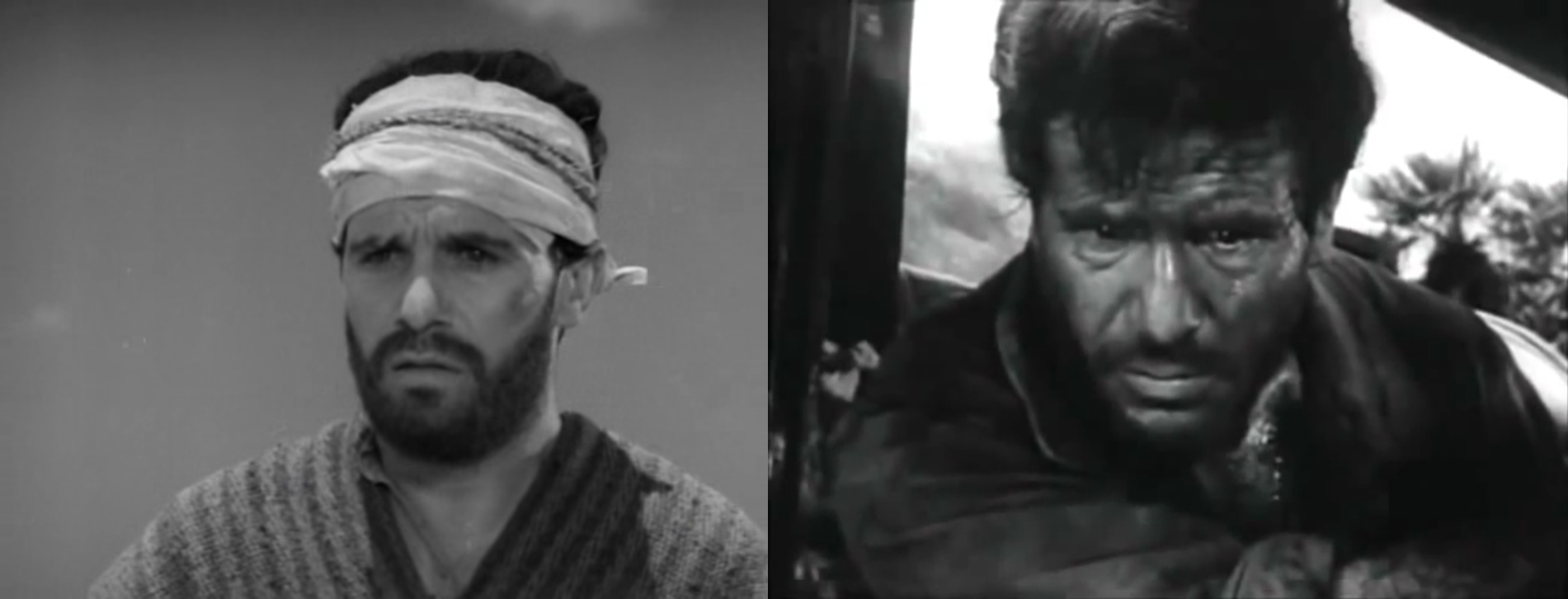
That motto, mentioned in the excerpt appears in the film as “Soy Lento Pero Seguro”, meaning
“I’m Slow But Steady”. In the novel the phrase is written in Guinari rather than Spanish, but has
more or less the same idiomatic meaning, and could be translated as “Nothing Hurries Me, and
Nothing Halts Me.”
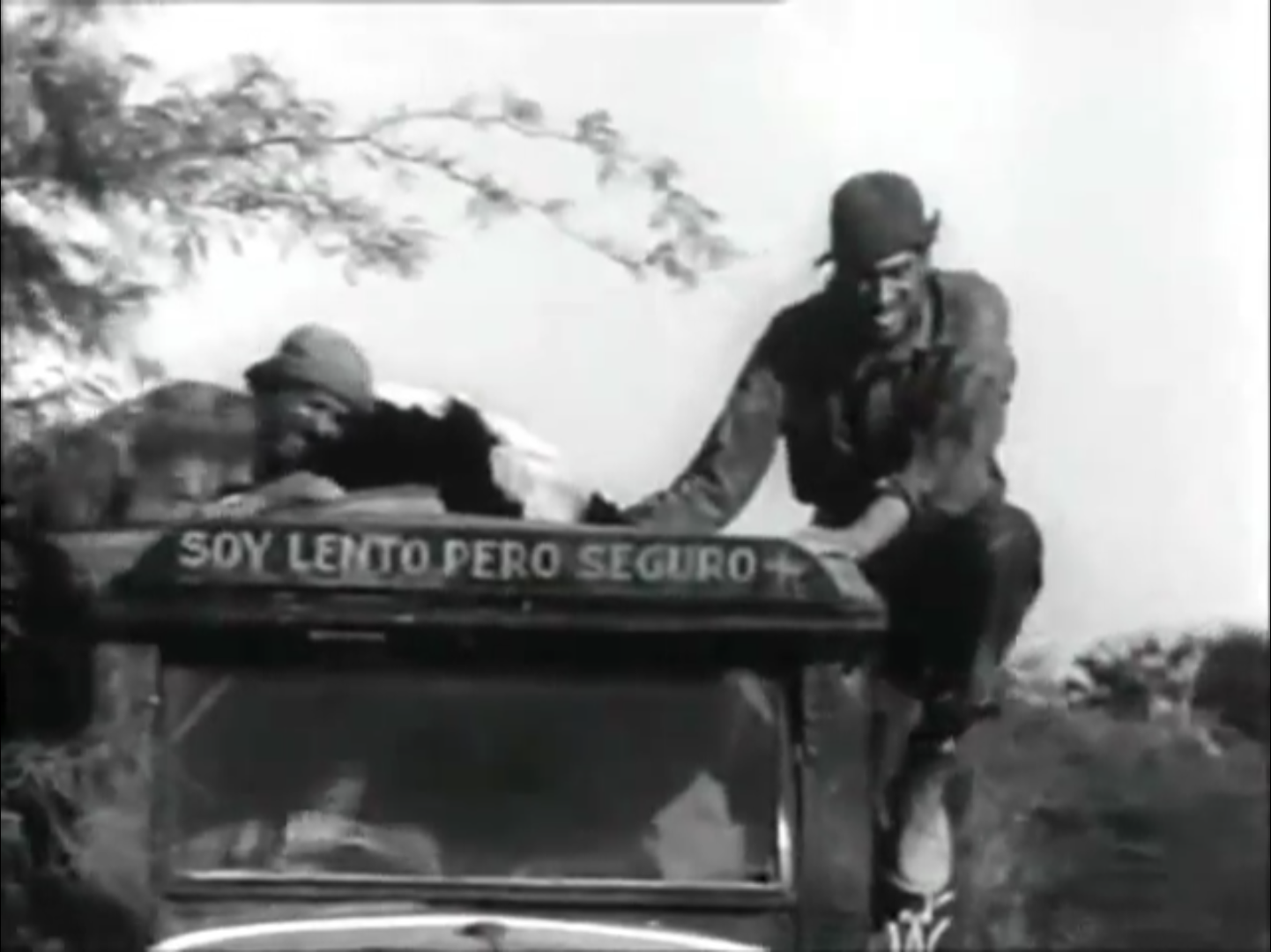
It was common for mottos like that, or names or phrases to be painted onto trucks in South
America. A detail that was used to great effect in William Friedkin’s Sorcerer (1977), with its two
hero trucks named ‘Sorcerer’ and ‘Lazaro’. Sorcerer happens to also star Francisco Rabal as
one of its four leads, and watching it now, Rabal’s presence takes on a meta-textual element,
like his character Cristóbal Jara has been resurrected to drive a truck through perilous terrain
once more and meet a similar fate. Only now he’s transporting nitroglycerin instead of water.
Sorcerer is ostensibly a remake (or based on the same source novel if you want to be
particular) of another film I’ve mentioned, The Wages of Fear, and I think Friedkin managed to
make his version worthwhile by distinguishing it from Clouzot’s in philosophical outlook. I’ve
always seen The Wages of Fear as a nihilistic film with its characters at the mercy of the cruel
capriciousness of an uncaring universe, whereas Sorcerer I consider a determinist film, with its
four truck drivers’ fate locked-in during their prologue vignettes, and their fate is inescapable.
Watching the film now, I believe that The Wages of Fear was only one of Sorcerer’s parents,
with the other of course being Hijo de Hombre. I haven’t seen Friedkin cite it as an influence,
but there are a number of strong parallels between the two films, and at the very least Rabal’s
presence ensures that there was someone on set who would have been thinking of Hijo de Hombre.

The Wages of Fear is the film that seems to make the most sense to compare Hijo de Hombre
to, and there are moments when that comparison seems encouraged.6 Demare cranks up the
tension and suspense in a Clouzot-like way, without direct imitation, and there are certain
images that come across as inspired by The Wages of Fear without being outright lifts.
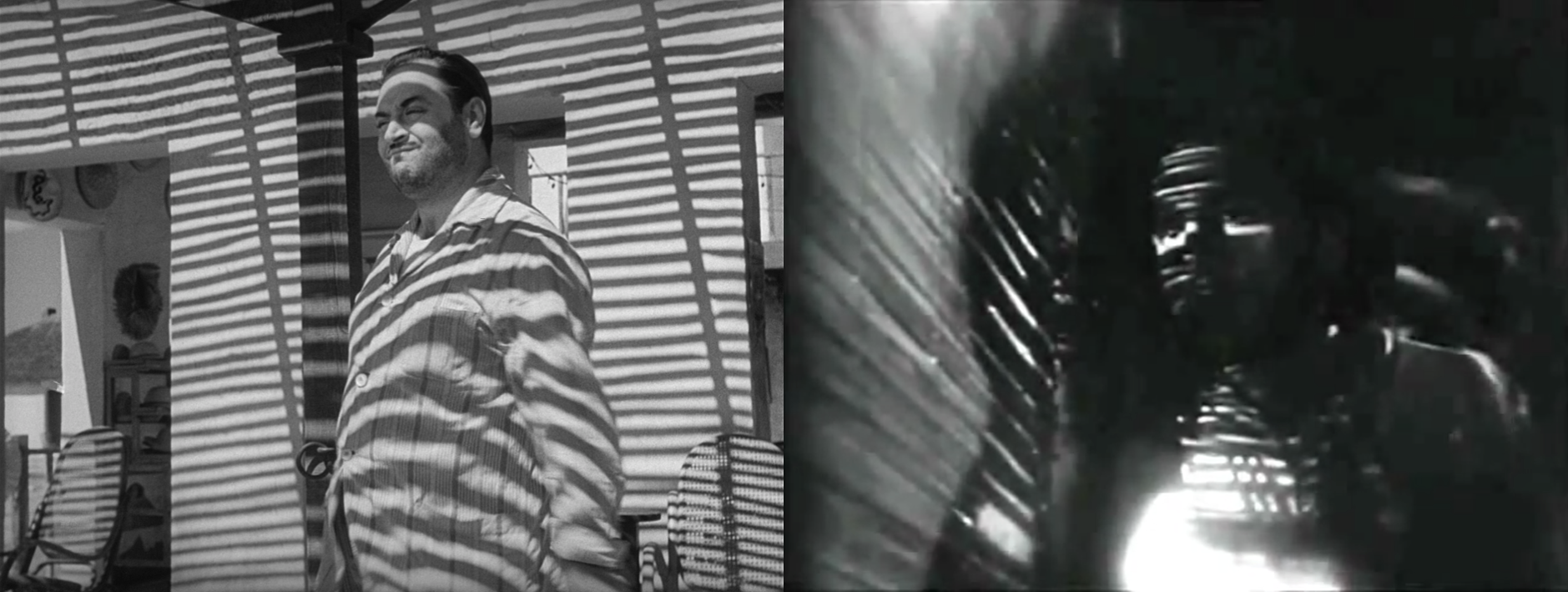
However, comparing the two films feels a bit like comparing Kurosawa’s Seven Samurai to
Eiichi Kudo’s Eleven Samurai. The Wages of Fear is an all-time great, but Hijo de Hombre is
leaner, faster, and more focused.7 The Wages of Fear takes its time, and at nearly two and a
half hours long, it only gets rolling roughly an hour into its runtime, after setting up character
motivation and tone. Hijo de Hombre hits the ground running. The opening scene is of the
battalion of soldiers in a state of extreme thirst, which establishes an urgency that will
dominate the entire film. Every second of its ninety-one minute runtime matters for its
desperate characters, and backstory is filled in with reverie-like flashbacks while on the go.
Hijo de Hombre also distinguishes itself from The Wages of Fear with its leading lady. The
Wages of Fear leaves Véra Clouzot (Brazilian-French actress and wife of Henri-Georges
Clouzot) in the dust both figuratively and literally. Can I get away with only saying that Henri-Georges
Clouzot’s depiction of the women in his films was ‘complicated’ and leaving it at that
for this article?
Hijo de Hombre’s lead actress is Olga Zubarry, who plays a nurse named María
Saluí. She’s as tough as she is compassionate, and for most of the film feels as much like the
protagonist as Cristóbal does. The character’s background as a prostitute is explored in a
flashback, and like Cristóbal evoking Christ, her name evokes Mary Magdalene (this is further
compounded with her name being changed to Magdalena in some of the European versions of
the film). Again Nazarín is echoed, with María resembling the character of Beatriz in that film.
Beatriz who follows and falls in love without consciously realizing it, with the character of
Father Nazarín. María becomes unsettled when her sexual advance on Cristóbal is treated not
with contempt as others do, but rather indifference. She becomes compelled by him. The novel
gives clear insight into her fixation; “It tormented her not to know what he felt, not to be able to
cross the distance between them.” He tries to leave her behind, but she halts the convoy, and
makes Cristóbal take her with him on the mission, saying that they’ll “need a nurse” to finally
convince him.
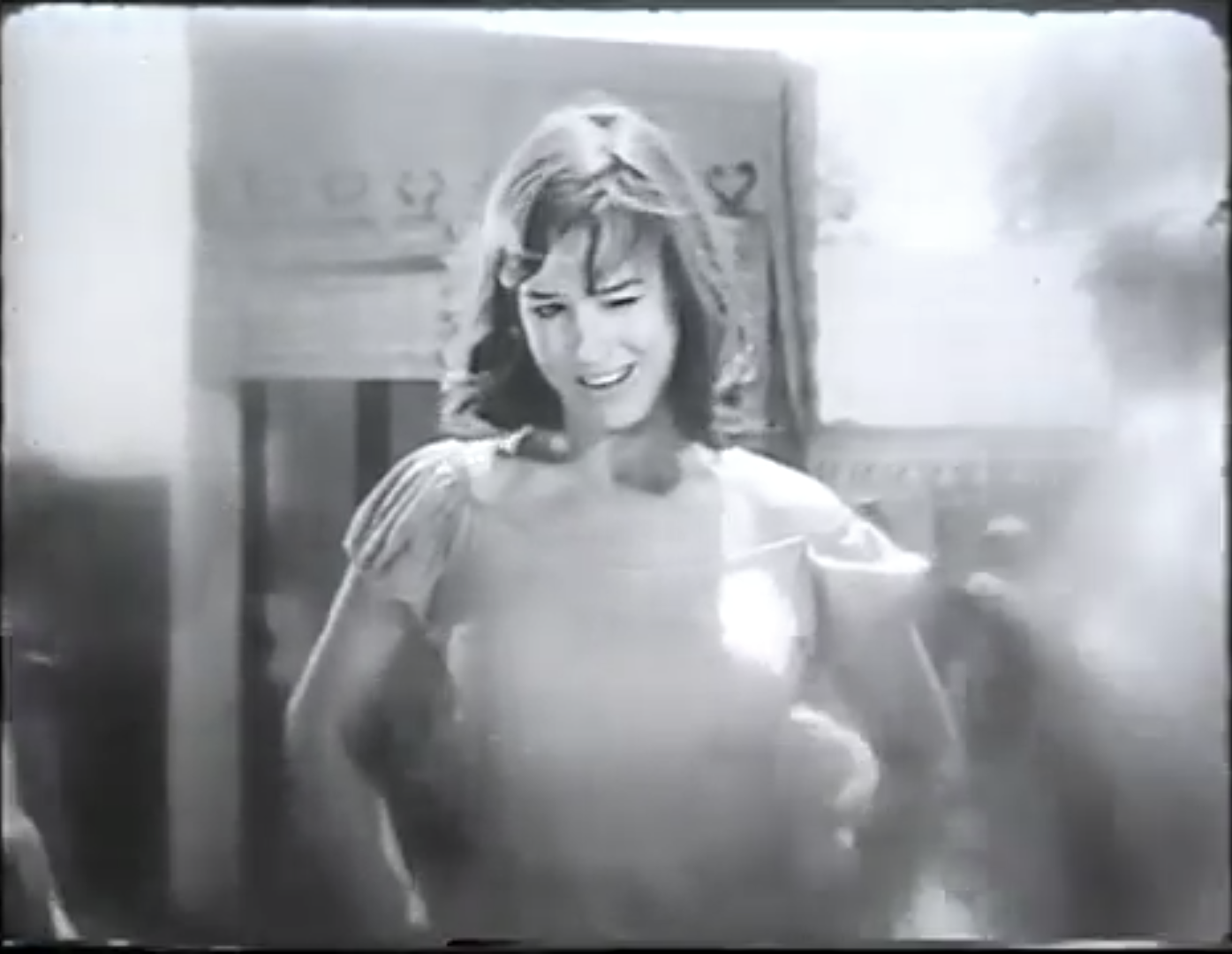
According to Helene Carol Weldt-Basson, in her essay All Women Are Whores: Prostitution,
Female Archetypes, and Feminism in the Works of Augusto Roa Bastos, nearly all of Roa
Bastos’ heroines are prostitutes. She elaborates that “…Roa Bastos’s portrayal of women as
prostitutes fail to result in a stereotyped portrait of women. Indeed, the object of this analysis is
to illustrate how Roa Bastos paradoxically employs the figure of the prostitute, as well as other
fixed female archetypes, to achieve a complex, postmodern view of women, as well as to
communicate a feminist message to the reader…” It’s easy to see on screen how María Saluí
defies cliché. She’s as hardboiled as the best of them, and often a more active character than
Cristóbal. For example while being bombed she bravely collects medical supplies from an
ambulance truck before it’s destroyed in a fiery explosion, while others stand back and gawk.
She’s a road warrior.
Olga Zubarry was perfectly cast as María Saluí. She was known for her bold and adventurous
personality, and had achieved notoriety for supposedly being 'the first actress to appear nude
in an Argentine film’, with The Naked Angel (1946) which is based on an Arthur Schnitzler
novella. I was worried it might turn out to be a sort of proto-David Hamilton film when I found
out that it was shot when Zubarry was only 16 years-old, however as she clarified, “There was
no nudity. At that time I could not be nude, especially because I was younger. What judgments
the producers and the owners of the studio had to endure! I had to wear a flesh-coloured
mesh.” In watching the film, it’s clear that the filmmakers clearly played it safe, no matter what
audiences imagined they saw.

The Naked Angel wasn’t Zubarry’s first role, but it was the one that catapulted her to stardom,
and a career that would span six decades (Hijo de Hombre was her thirty-fifth film). She had
also starred in La sangre y la semilla (1959) where she played a 19th century Paraguayan war
widow. The film was co-written by Augusto Roa Bastos, so there was some connection prior
to her being cast in Hijo de Hombre.
Zubarry would often be characterized as “Argentina’s own Ingrid Bergman” for her talent and
beauty. In a 2011 interview (just a year before her death), reflecting back on her long career, she
cited her role in Hijo de Hombre as the one she was most proud of. I wonder if it’s in part
because it showed a strength to her that wasn’t often depicted with the elegant roles she
typically had. During a flashback to María’s life before the war, under Film Noir lighting,
surrounded by smoke from her cigarette, Zubarry is shot with all the grace in the world, but it’s
a fleeting moment, there only to juxtapose with the rest of the film, where the War of Thirst has
covered her with dirt, motor oil, and blood.
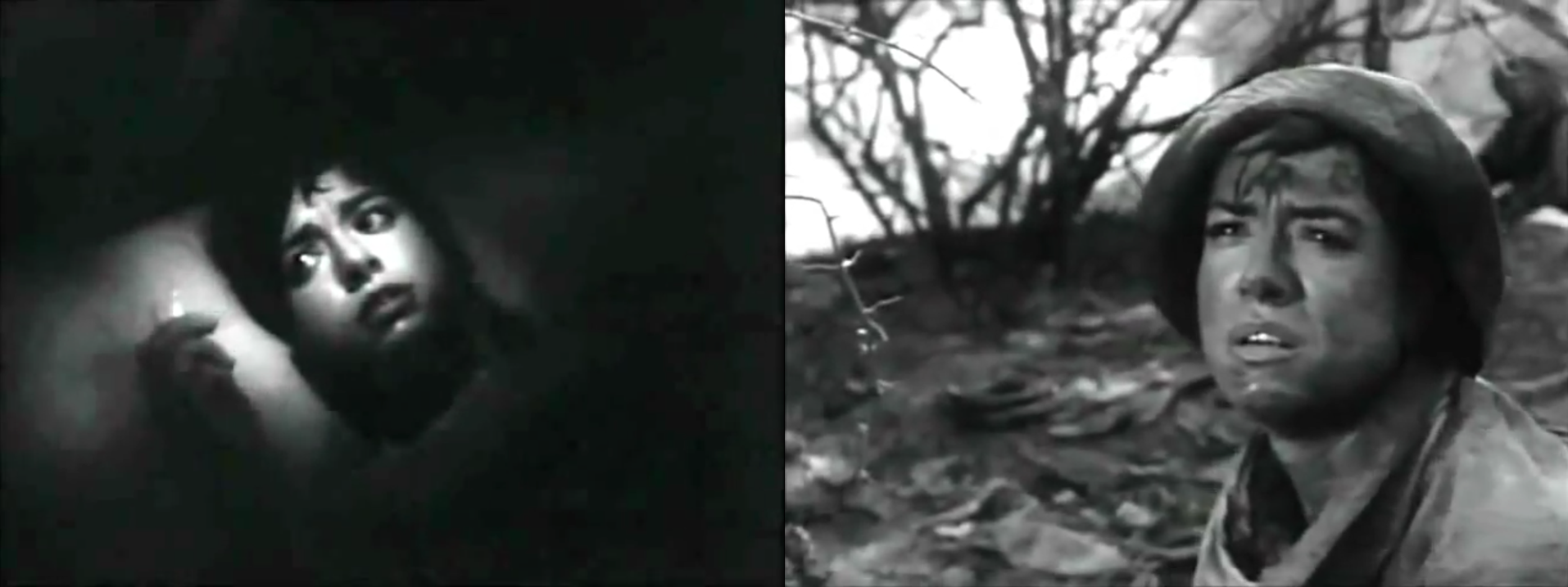
To support the film’s two leads and round out the cast, Lucas Demare brought in Paraguayan
actor Jacinto Herrera, who he had worked with previously on his acclaimed colour western El
Último Perro (1956). Here he plays the leader of the convoy, Sergeant Silvestre Aquino.
Herrera’s calm, burly presence balances the quiet intensity of Francisco Rabal’s performance.
He brings a sense of stability to the film.

Herrera’s most memorable scene comes just after an attack by Bolivian biplane bombers on
the helpless trucks. A bomb punctures one of the vehicles but does not detonate. Sergeant
Silvestre takes it upon himself to try to defuse the bomb, or rather as he says “defang” it,
knowing that it could explode at any moment. With the explosive centimetres away from his
face, it’s classic high-tension stuff. Very suspenseful…
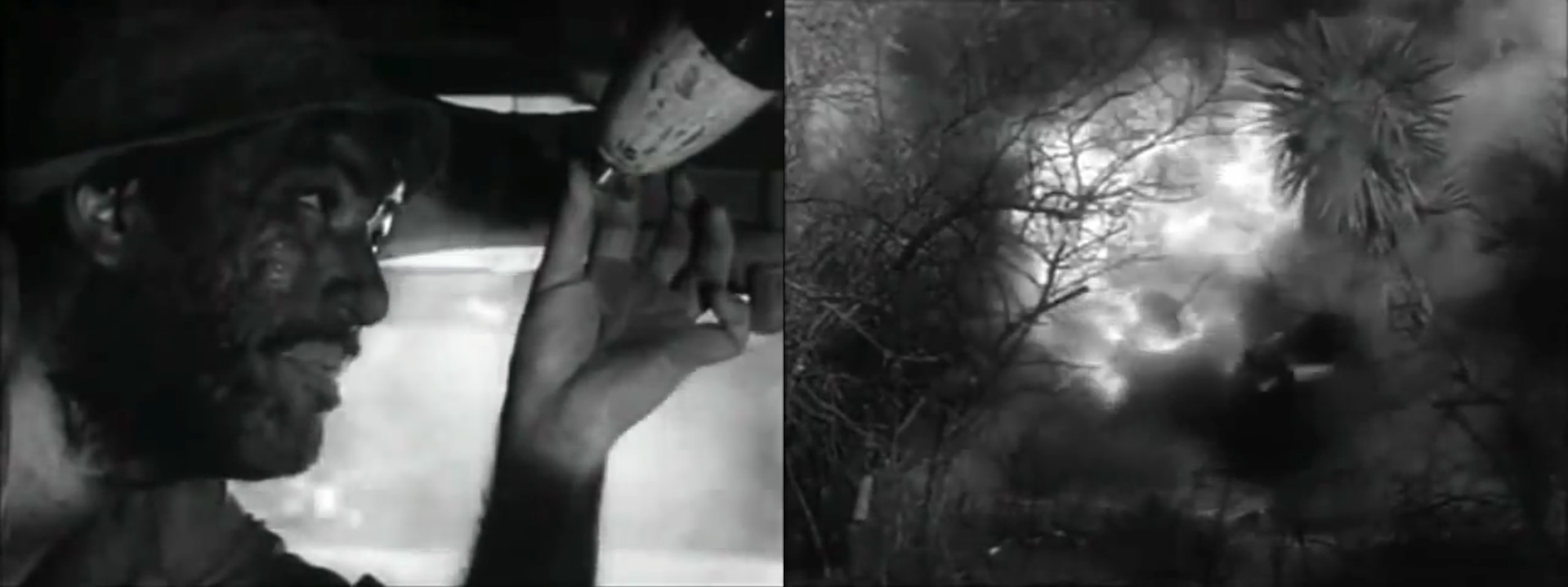
Just when it seems he’s got it, the bomb goes off. Silvestre and the precious truck are blown
completely away. A gruesome detail from the novel was excised, that Sergeant Silvestre was
decapitated in the blast. His death cements the seriousness of the situation. It sinks in that
we’re not watching an adventure film like Cent mille dollars au soleil (1964), which stars Jean-
Paul Belmondo and Lino Ventura as competing truck drivers in North Africa. Cent mille dollars
au soleil has its cynical edge and is an excellent film, but it’s also a ‘fun’ film. Hijo de
Hombre’s heart is in a more somber place. Anything bad can and probably will happen to its
characters.
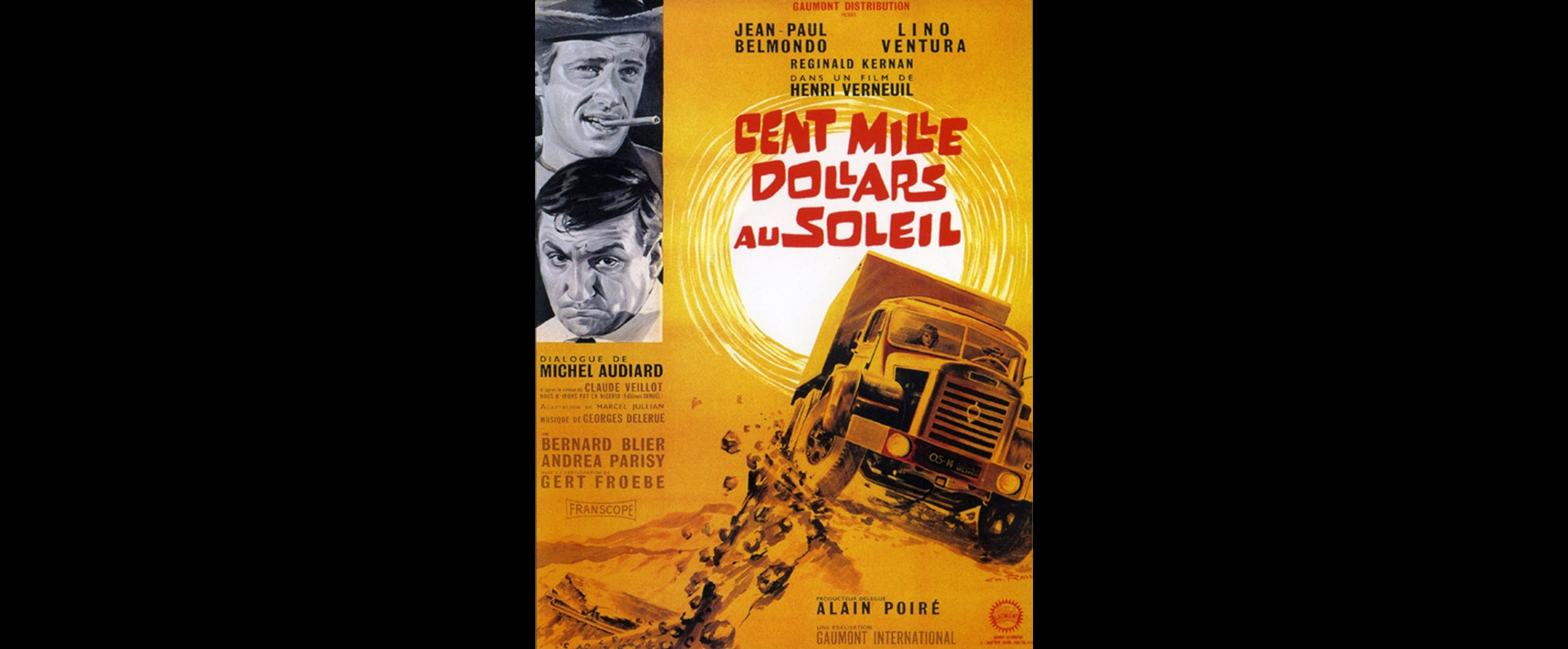
Threats to the convoy come not only from the enemy Bolivians, but also from Paraguayan
comrades who want to drink more than their fill. One stunning sequence has what’s left of the
convoy arrive at an allied outpost. Thirsty soldiers nearly riot when they're told that the water
isn’t for them, but for a special mission. Demare makes sure to pan across their desperate
faces. The drivers finally relent and give up a half cup of water to the lined up soldiers. While
the drivers are giving out water to the wounded, one soldier who had already gotten a cup
shoots himself in the hand and pretends that he hasn’t gotten any. When a driver who
recognizes him examines the hole in the hand (which introduces an image of Stigmata into the
film) he recognizes the self-inflicted wound for what it is. “You would have been better to shoot
to kill,” the driver tells the soldier and kicks him to the dirt.

Other obstacles are even more frustrating. At one point the whole convoy is forced to go
backward on a narrow path for a very long stretch after running face to face with an oncoming
truck full of wounded soldiers, undoing large chunk of their progress towards their destination.
As imposing as the impediments are, Cristóbal has an unwavering determination that carries
him through. When the tires of the truck are slashed, rather than give up or panic, he simply fills
them with esparto grass to keep rolling. At one point María asks Cristóbal if he believes in
miracles…in “things that only god can accomplish”. His answer is that he believes there’s
nothing man can’t accomplish.
But in this accursed Eden, no miracle is possible.
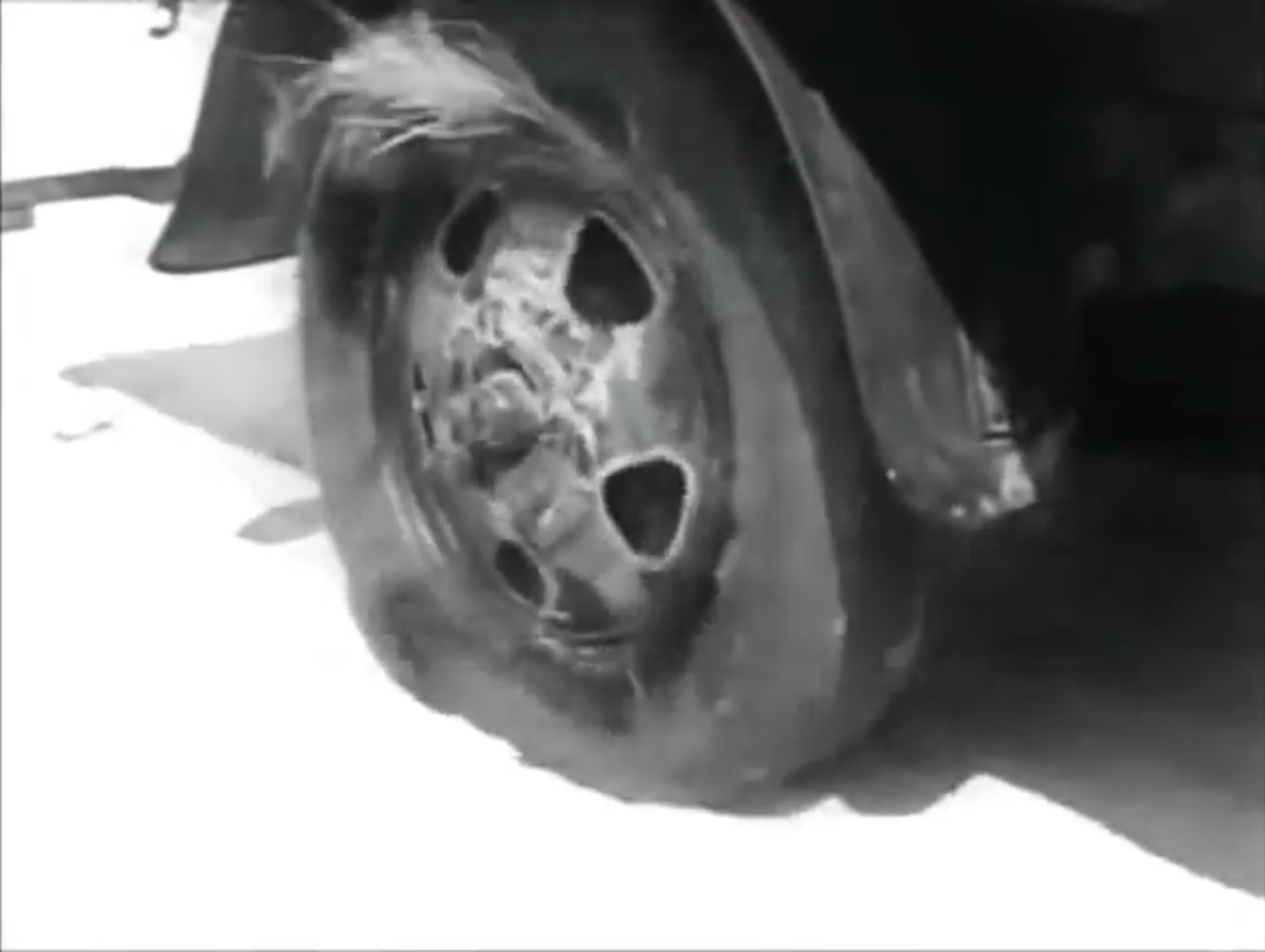
Seeing Cristóbal and María overcome the seemingly insurmountable in their truck, I’m
reminded of George Miller’s heroes, Mad Max and Furiosa in Mad Max: Fury Road (2015).
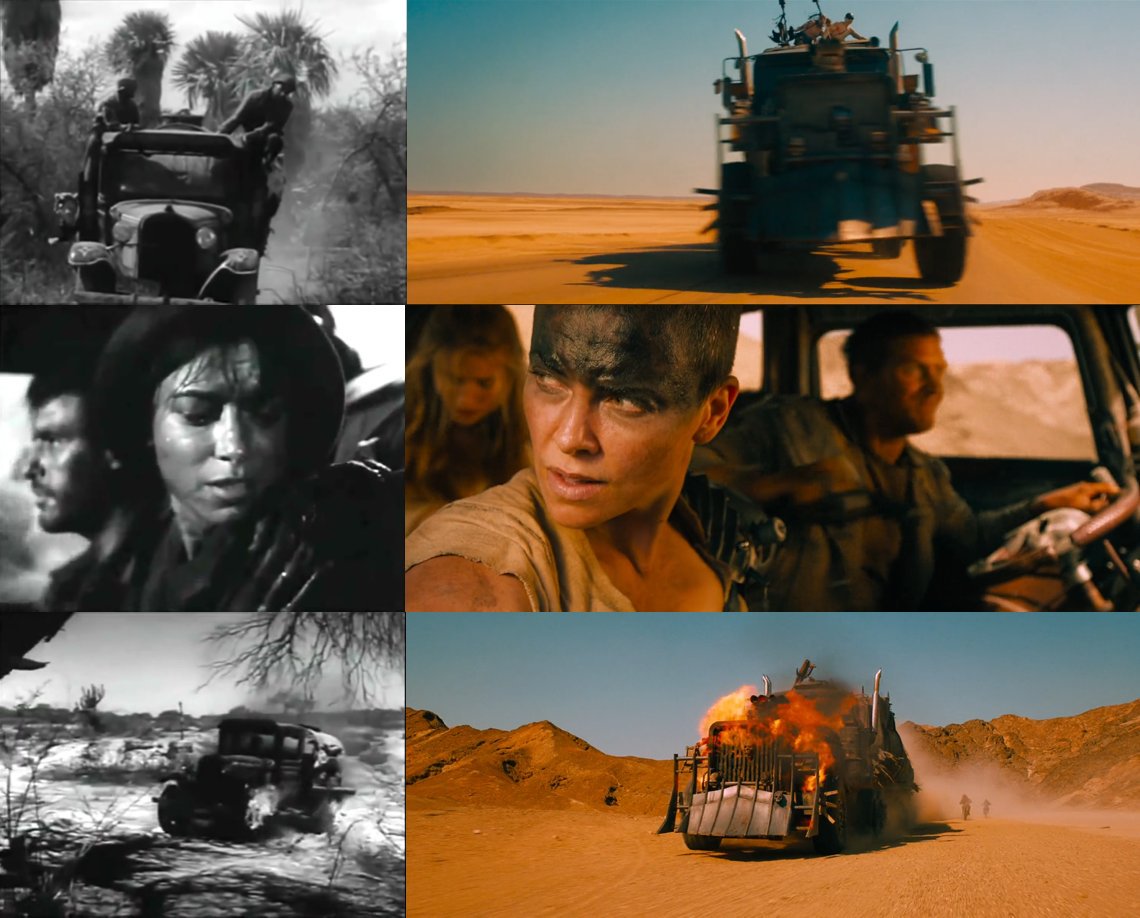
The Mad Max films became increasingly fantastique with every instalment, and are far removed
from the realism and history of Hijo de Hombre, but it’s also hard not to see Hijo de Hombre as
a sort of prototype for the action and visual storytelling that characterizes those films. On one
hand it’s entirely possible that there’s only so many ways to stage interesting and exciting
action around a truck in the desert - driving it through dust storms, hanging off the top of it,
setting it on fire, and defending it like it’s a fortress - but still, enough images and moments
strike me as similar enough to at least speculate that Hijo de Hombre may have planted a seed
of influence in George Miller at some point in time.
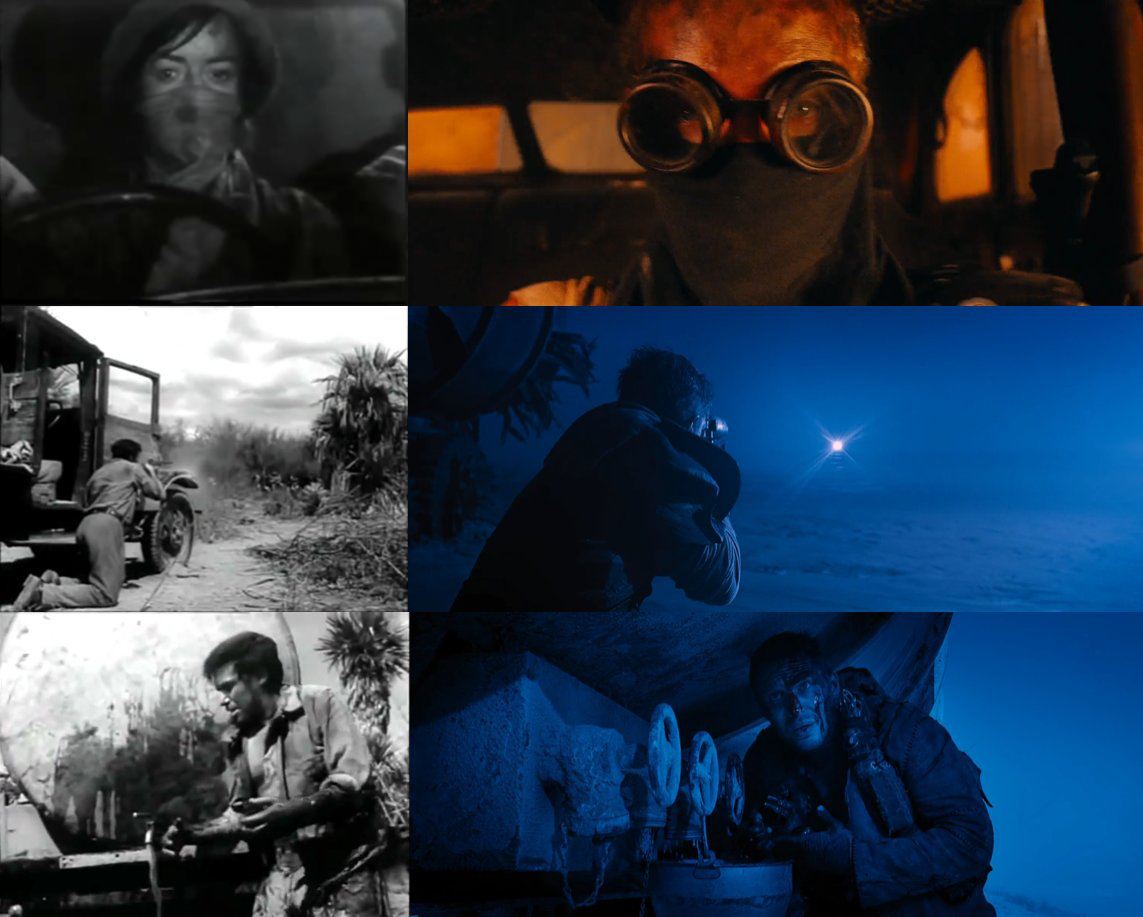
FiNAL DESTiNATiON
The final obstacle for Cristóbal and María comes in the form of an ambush by thirsty Bolivian
soldiers. Cristóbal is shot up, and the soldiers capture the final water truck. They even shoot
holes in the sides of the tank to get at the liquid right away. In the novel Roa Bastos compares
the sight of the soldiers drinking from the truck, to a sexual violation. It seems Demare tried to
visually realize that simile with the repugnant enthusiasm of the soldiers, and the way some
grin after drinking the water they took by force. In that way the scene takes on a subtext for
other casualties of war.
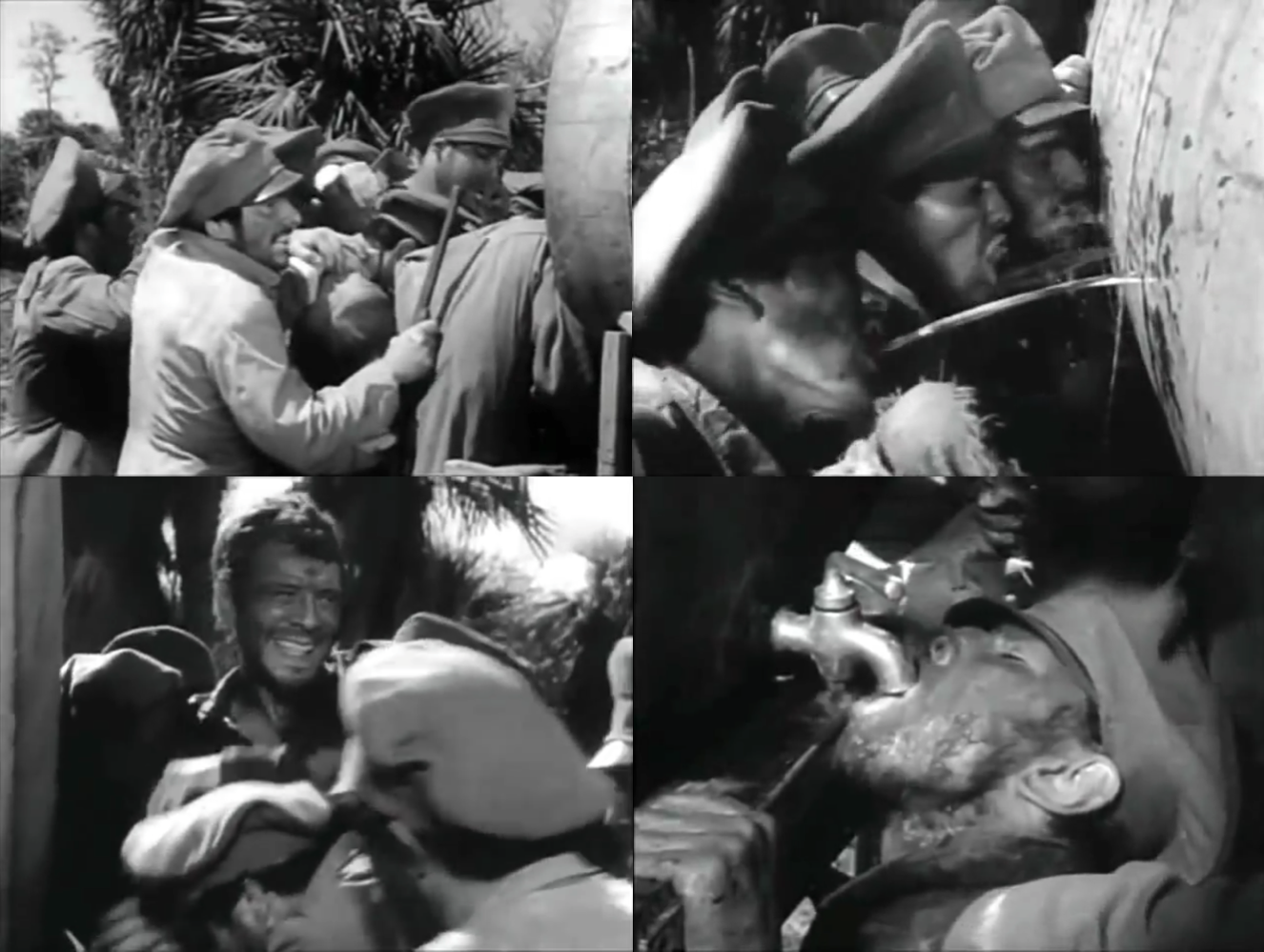
It’s María who springs into action, grabbing a bag of grenades, and then fiercely tossing them
at the soldiers. The novel describes her as looking “wild and terrible with her halo of dust”. She
singlehandedly manages to drive the enemy away.
Wounded, Cristóbal staggers up to the still running tap, spilling out precious water. His hands
are too mutilated to turn it off, so he uses his elbow. María helps to quickly plug up the bullet
holes in the water tank with sticks.
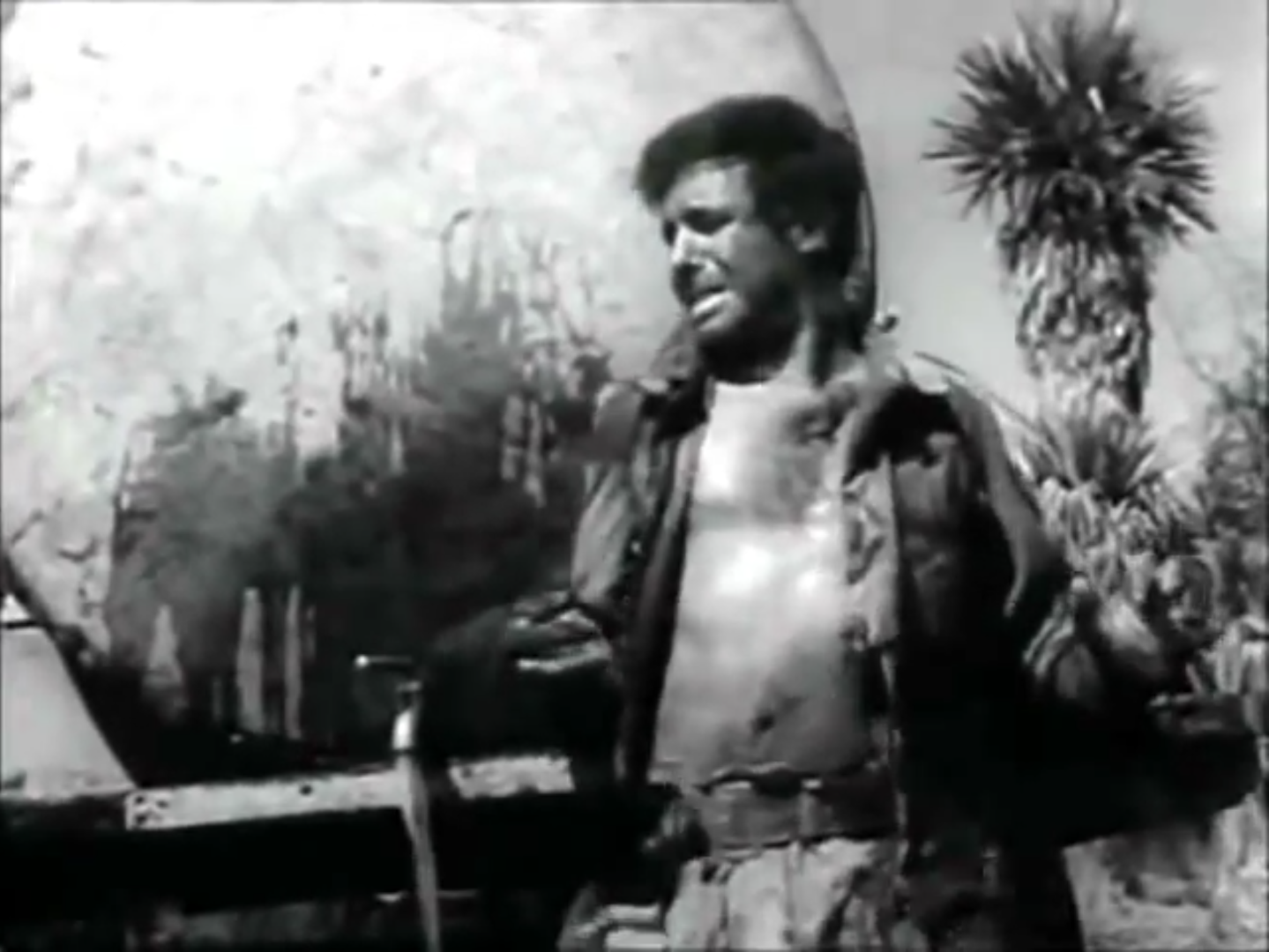
Apparently the filming of Cristóbal being wounded also resulted in an injury to the director. In
an interview with the journalist Julio Ardiles Gray, Demare described how he took it upon
himself to be the one to fire the rife with blanks (made weightier by talcum used to create more
smoke on screen) at Rabal. The rifle kept getting clogged with dust, so it wouldn’t shoot,
and while pointing the rifle downwards to avoid getting any more dust in it, the gun went off
pointed directly at Demare’s foot. In what must have seemed like a scene right out of the
movie, Demare had to be rushed to a doctor forty kilometres away in one of the 1928-model
trucks used in the film. The doctor thought it would be necessary to amputate two toes, and
Demare describing the sight said that he wished he could have amputated his toes himself.
Not wanting to delay production, he convinced the doctor to only clean the wound and sew up
everything up as well as possible. Luckily he kept his toes, but Demare would have to continue
to shoot while on “rustic” crutches created by the film’s carpenters.
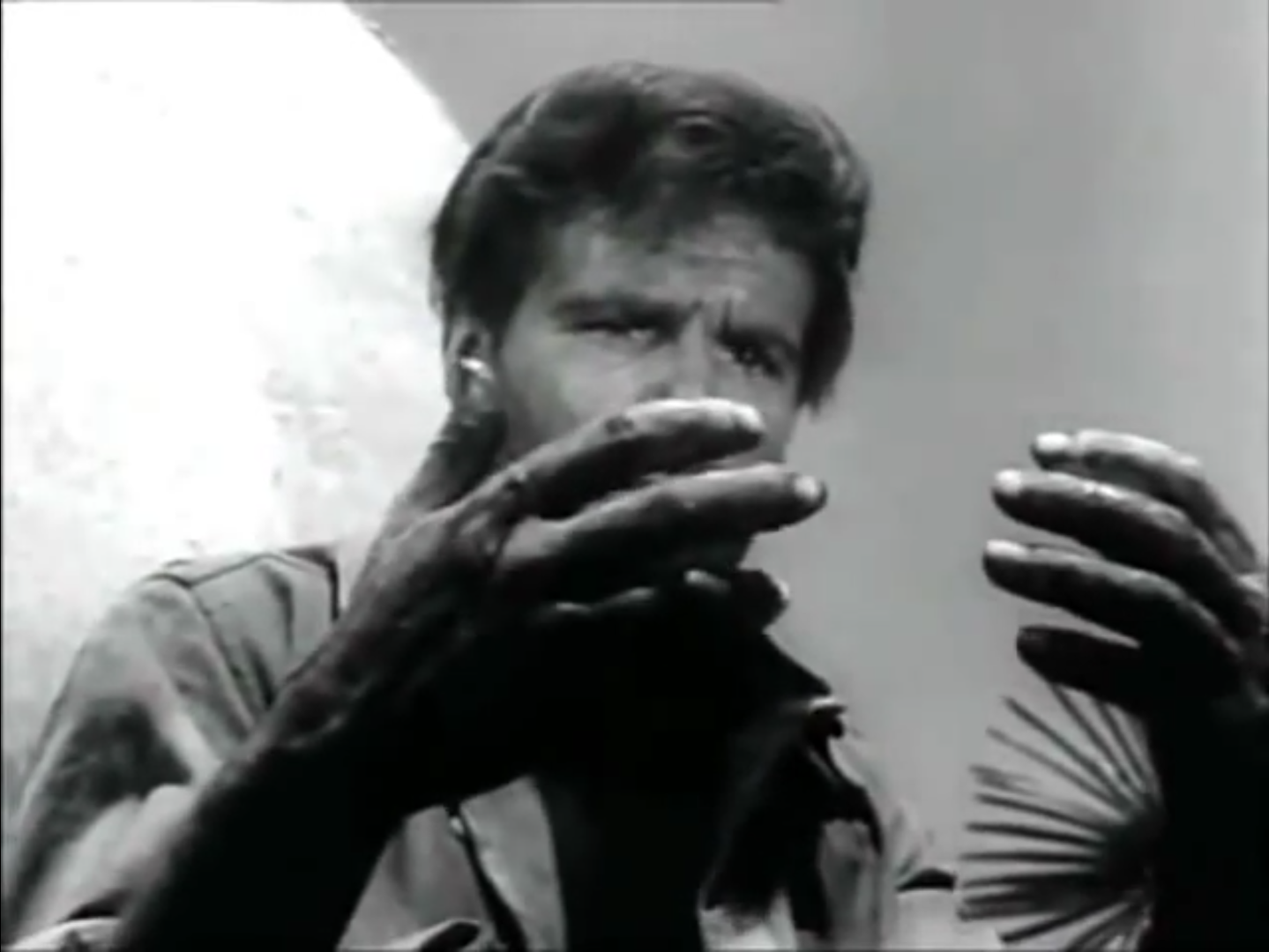
In the novel it mentions that the sight of his swollen and mangled hand reminds Cristóbal of
Sergeant Silvestre’s head that was popped off in the explosion. Driving the truck seems
impossible now but Cristóbal, being the man who believes there is nothing man cannot do,
concentrates and comes up with a solution.
Cristóbal has María use chickenwire to tie his hands tightly to the stick shift and steering
wheel. “Pronto,” he tells her when she hesitates at the grotesque sight. It’s like a strange
automotive variation of crucifixion. Not that everything that preceded in the film wasn’t
impeccable, but this is the scene where during my first time watching the film, I realized I was
seeing something special.
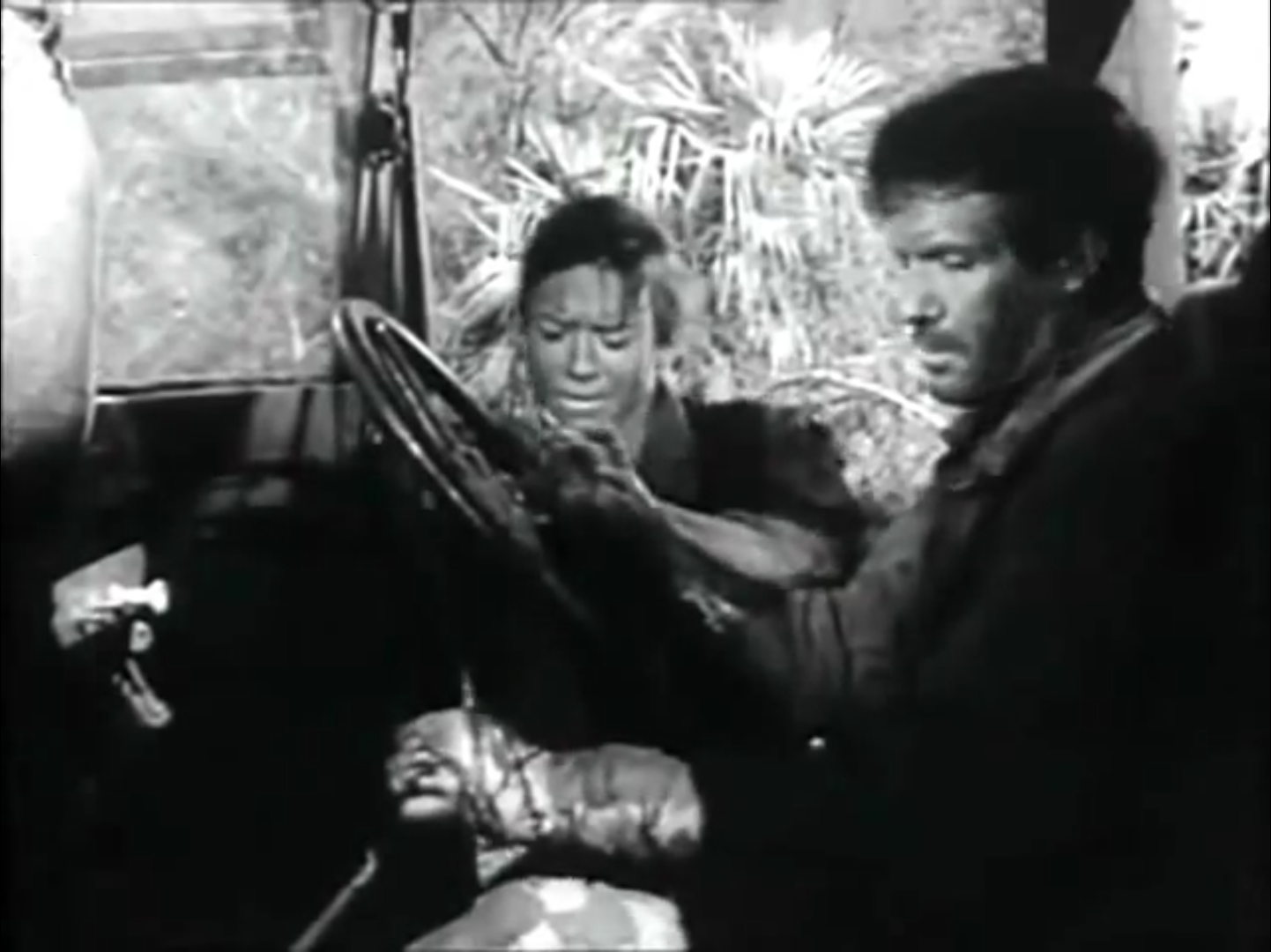
María is clearly in her own anguish with a tired and pained expression, but Cristóbal is too
focused to notice. During the scene, I’m astonished by how much Olga Zubarry reminds me of
Renée Jeanne Falconetti in The Passion of Joan of Arc (1928).
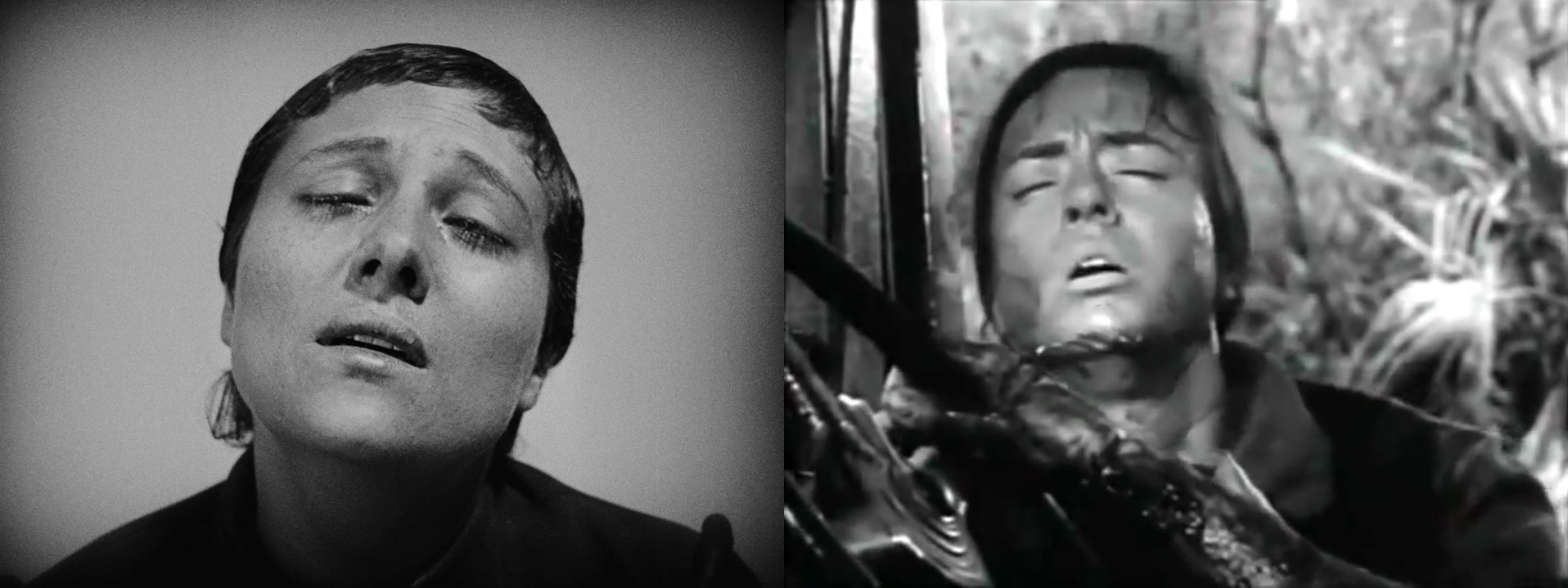
Just as she finishes, María collapses, and Cristóbal can see the shrapnel wound on her back.
Wired in, it’s impossible for him to get out to go to her. They share a final look, and it’s a credit
to the actors, how one look without any words between them can contain so much; the
distance between them filled with a deep and growing ocean of regret, realizing just a little too
late that they could have lived and had a life together. That everything they’ve been through
was a mistake that there is now no escape from. The wheels of fate (along with the wheels of
the truck) are already in motion. There is no going back. The only thing left is the mission, and
Cristóbal will have to make the final stretch alone.
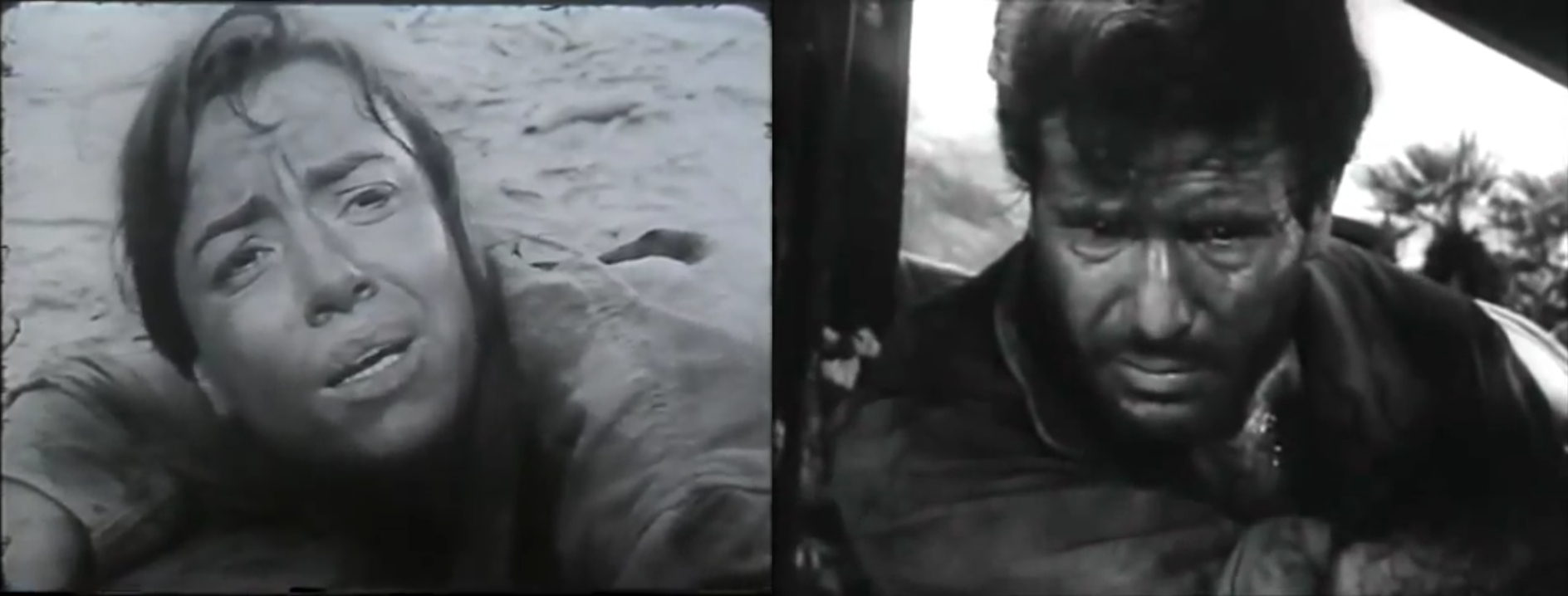
From the novel:
For now the only thing that mattered was to go on…through the desert, through the merciless
heat of the sun, and the head of his dead friend, through this awful country where life and death
could not be separated. That was his destiny. And what other destiny could there be for
Cristóbal Jara?
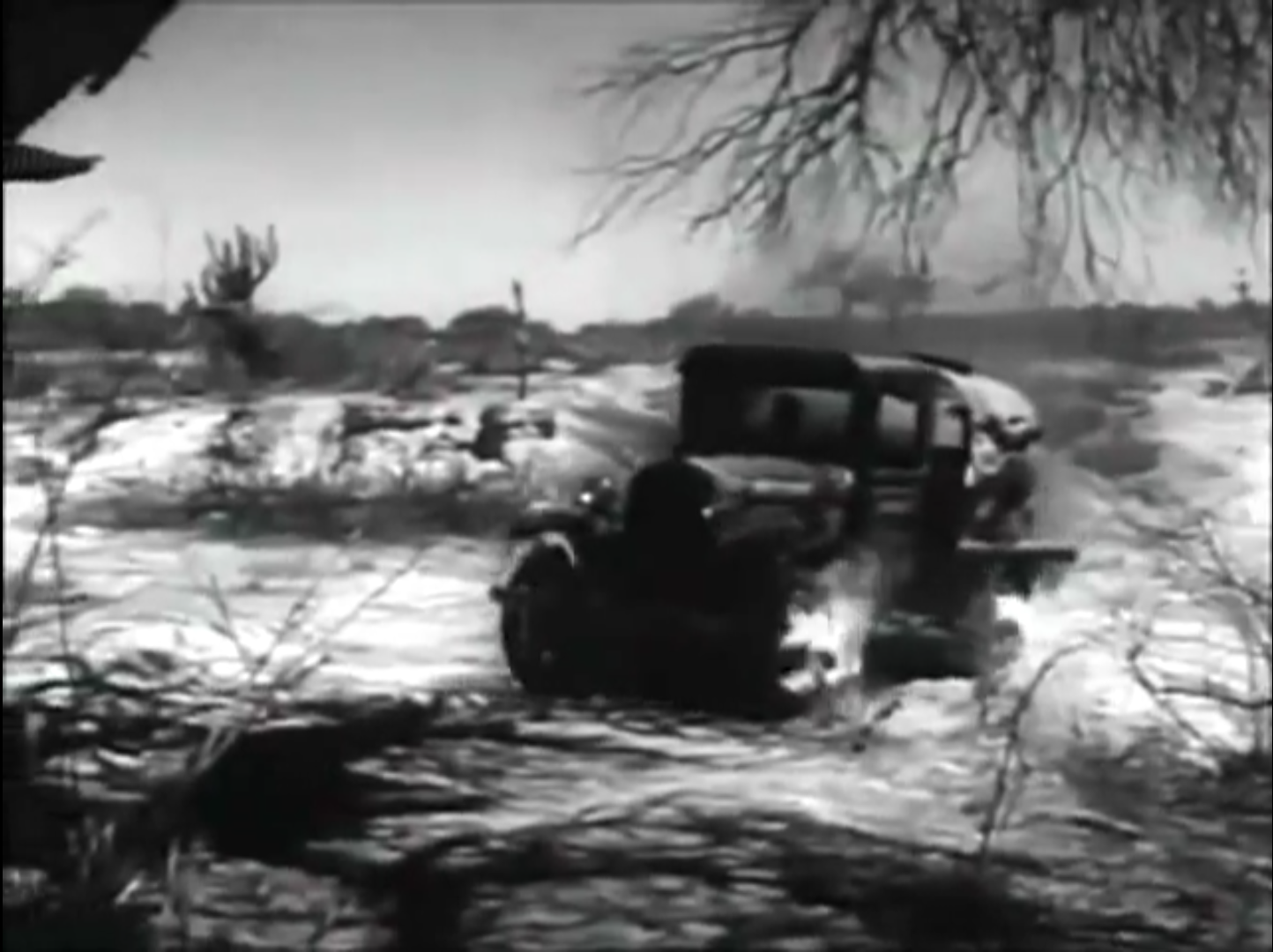
I think the desert is a perfect stage for existential stories. It’s where devils can be confronted
both outside and within. Unfortunately it’s become something of a cliche, but I love a good
‘wandering in the desert’ film. Driving in the desert is even better. At this point in particular I’m
reminded of Jauja and Zama wherein their protagonists (played by Viggo Mortensen and Daniel
Giménez Cacho respectively) are worn down to nubs of men by the landscape, just like
Cristóbal.
Both the man and the vehicle are pushed to their limit. He drives the truck, but judging by his
expression it may as well be a cross he carries. Cristóbal bleeds and the truck burns. Nothing
Hurries Me, and Nothing Halts Me.
In the novel, Bastos described the truck as being like a mythological animal. Some archaic
behemoth, rolling across the landscape, flames and smoke spewing from it. That sort of
animism in trucks has appeared in other films, one of the best instances of which would be in
Steven Spielberg’s Duel (1971). Also, once again I’m reminded of Mad Max, specifically at the
climax of The Road Warrior (1981). Just like Cristóbal, Mad Max fatalistically drives his truck,
his bruised face half-hidden in shadow and one hand on the steering wheel. I’m willing to
double down on my speculation and would be ready to eat my hat if George Miller hasn’t seen
Hijo de Hombre.

Cristóbal struggles to keep conscious. You want so badly for him to make it in time to save the
battalion. To make all the suffering that we’ve seen transpire throughout the film worthwhile. A
redeeming act. For a moment it seems possible that the man can perform a miracle. Of course,
what sort of a film would it be if it gave us exactly what we wanted?
But in this accursed Eden, no miracle is possible.
There’s one more key actor in the film who I haven’t yet introduced, Carlos Estrada. Strangely
the only other film I’ve seen Estrada in is the 1987 action movie, Rage of Honor which is a
Cannon Films production about a ninja traveling to Argentina to battle a drug lord. It stars Sho
Kosugi, who is more or less responsible for kicking off the 1980s boom of Ninja in popular
culture. Estrada has limited screen time in Hijo de Hombre, but plays the significant role of
Miguel Vera, the military officer in charge of the dying battalion. The novel characterizes him as
an upperclass man who “despite having been born out in the country, did not possess the solid
good sense of the peasantry... He did not know how to find his way, even within permitted
limits. He was only able to lose himself.” In other words, he’s completely unlike Cristóbal.
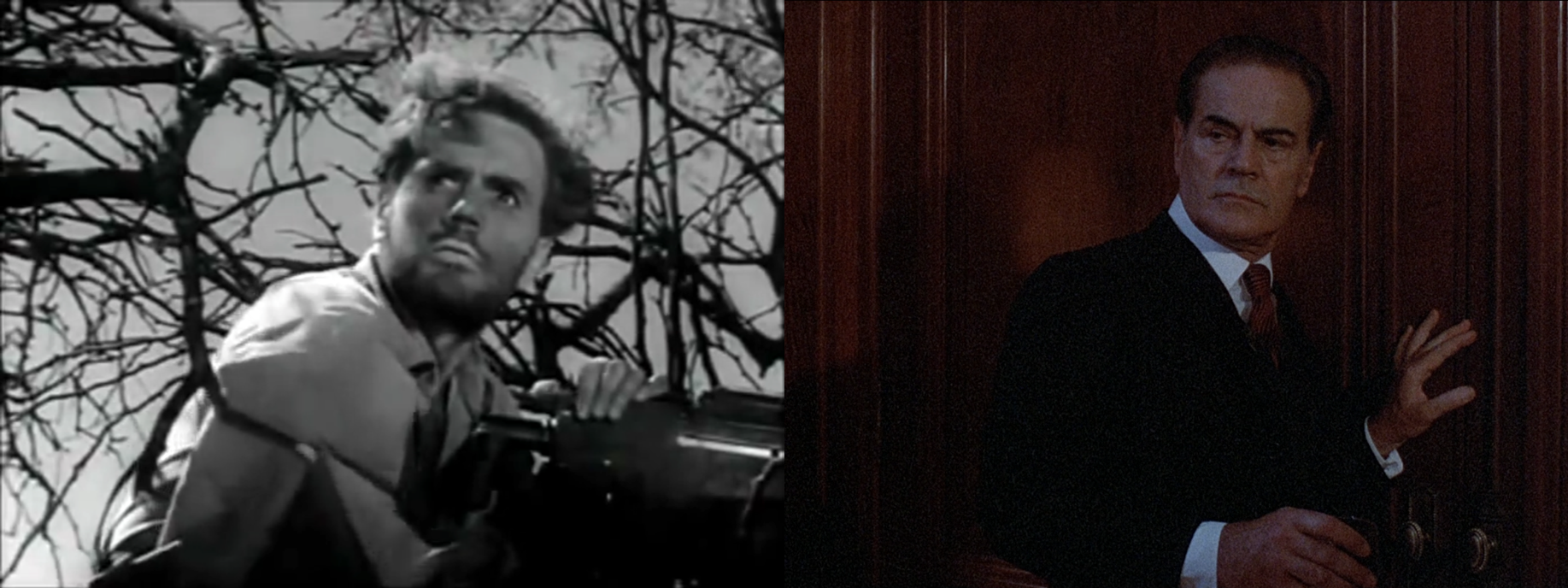
Miguel Vera has given up and is ready to take his own life, but decides first to take care of his
remaining men, who twist and moan in extreme agony. Like some Bruegel scene of Hell. Vera
uses a Maxim machine gun to put his thirsting troops out of their misery. He then lifts his pistol,
which has a cross dangling from it to his head, but just as he’s about the pull the trigger the
quiet of the dead allows Vera to hear a sound he couldn’t before, the sound of the truck. It’s
more or less the same horrible-horrible mistake that Thomas Jane’s character makes at the
end of The Mist (2007), though played much less melodramatically.
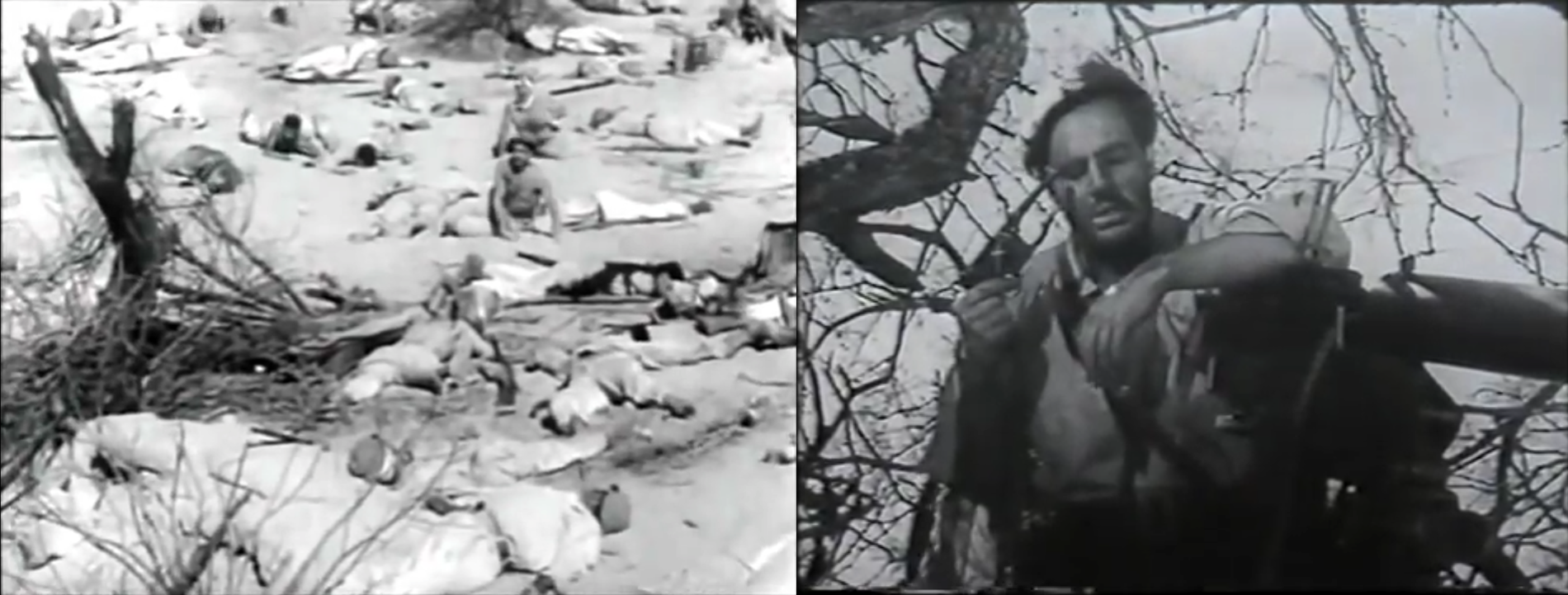
Just as Cristóbal reaches his destination, he succumbs to his wounds. His mission complete,
he runs the truck into a tree to finally halt it. Our hero dies with his head on the steering wheel,
gazing at us. The persistent beep of the truck’s horn is decidedly undignified.
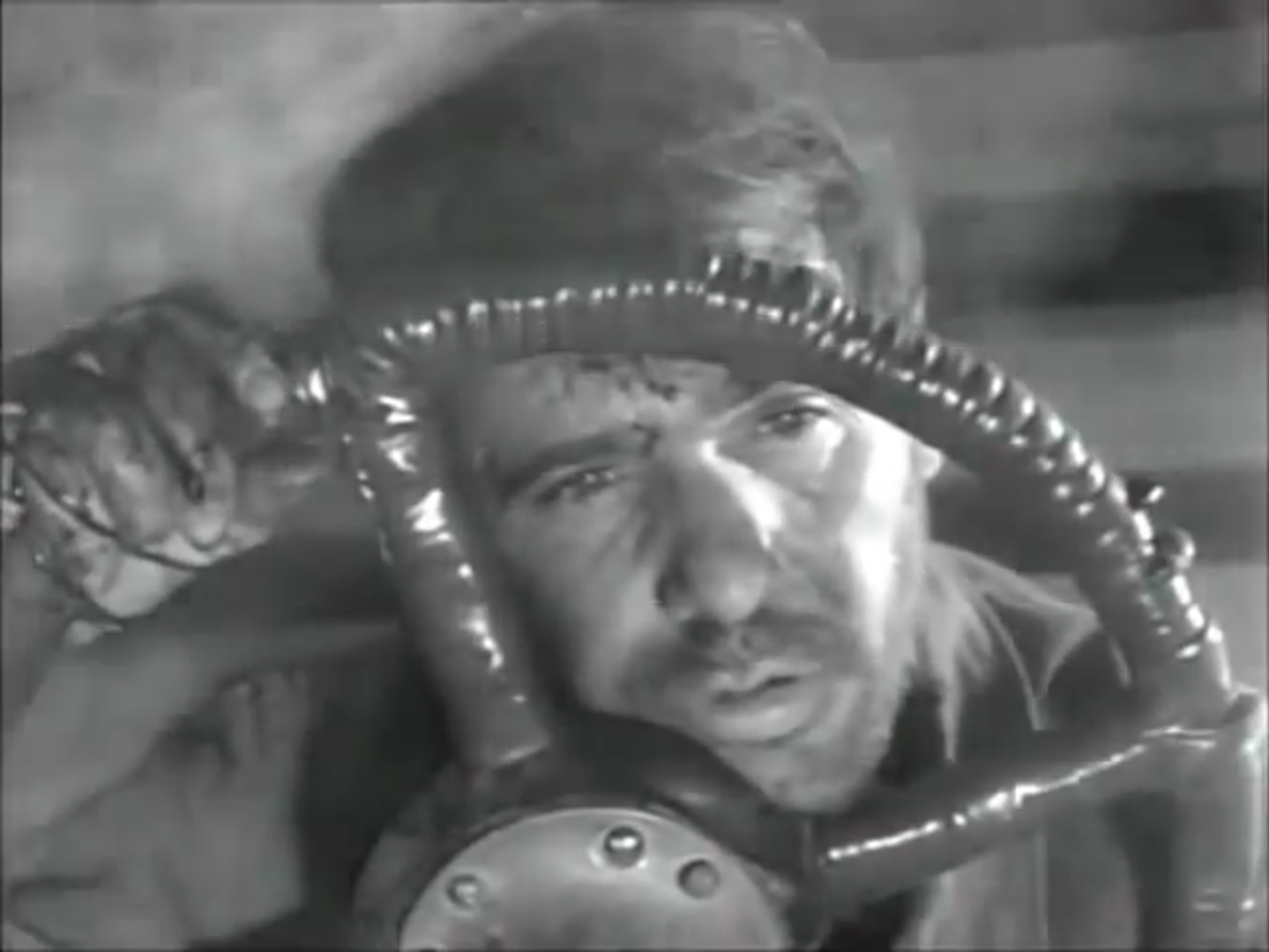
All Vera can do is bury Cristóbal. Dust to dust. He marks the grave with a cross, and I think of
how simultaneously strong that symbol is, while also not being nearly strong enough for this
land. There are things that man cannot accomplish. Roa Bastos’ sense for the cruel absurdity
of war is strongly felt. Pointless bravery, pointless desire, pointless sacrifice, pointless
martyrdom, all for this dry Chaco Eden.
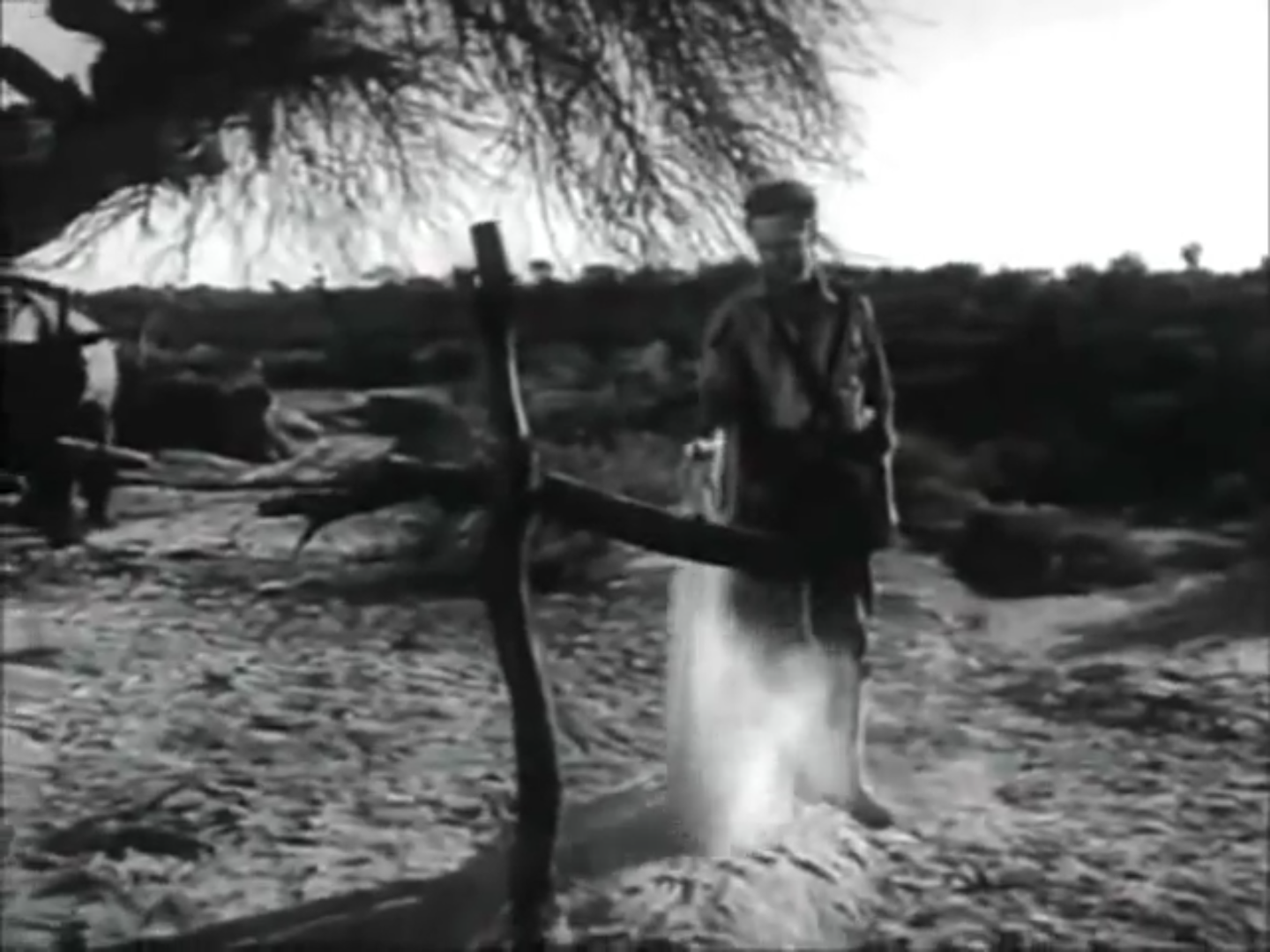
It’s an incredibly bleak ending, but could be interpreted as not entirely hopeless. One person
was saved after all. It might be worth contrasting the ending with the epilogue of another war
film, Steven Spielberg’s Saving Private Ryan (1998). An elderly version of the titular Ryan visits
the grave of the man who saved his life, and Spielberg emotionally stacks the deck by having
Ryan surrounded by his loving wife, children and grandchildren to reassure its audience that
the sacrifice of its characters was not wasted, and that Ryan lived the best life he could. Hijo
de Hombre gives no closure on what Miguel Vera will do with the lease on life he’s been given,
and you’re left with a feeling of ambivalence. In the novel at least, Miguel Vera dies not long
after the war. Whether it was by accident or by guilt-driven suicide, is unclear to me, but it may
have been meant to be left ambiguous.

FATE
So where has fate lead to?
It might not be surprising that as upsetting as it is, Hijo de Hombre was not as big a
commercial or critical hit as some of Demare’s previous films. It would be three years before
he’d make another film, an uncharacteristically long period of downtime for someone who had
been making a film or two (or sometimes even three) a year since the beginning of his career.
At least Olga Zubarry’s performance wouldn’t go unnoticed, and it won her awards at the Berlin
Film Festival and the San Sebastián Film Festival, the later of which also gave its top prize to
the film.
In the years since its release, Hijo de Hombre has become one the most beloved and best
remembered of Demare’s films, though that may not be saying much especially considering the
sorry state the film is in. The best version of the film available is a thirty year old telecine
uploaded to youtube by Lucas Demare’s daughter, musician and actress María José Demare.
She has a long film career of her own, beginning with a role in her father’s 1965 thriller, Los
Guerrilleros, which was also Lucas Demare’s second collaboration with Olga Zubarry.
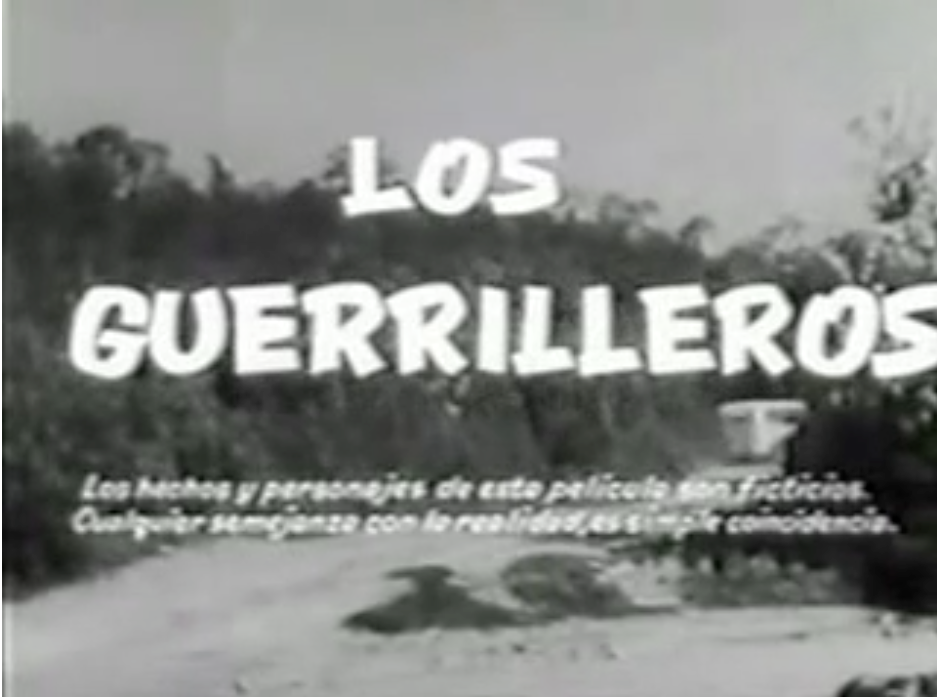
Francisco Rabal wouldn’t have the chance to work with Demare again, but he did star in
another Argentine film released the same year, La Mano en La Trampa which was directed by
Leopoldo Torre Nilsson. There’s no desert in La Mano en La Trampa, but there is dessert.
Rabal holding an ice-cream cone during a scene in La Mano en La Trampa:
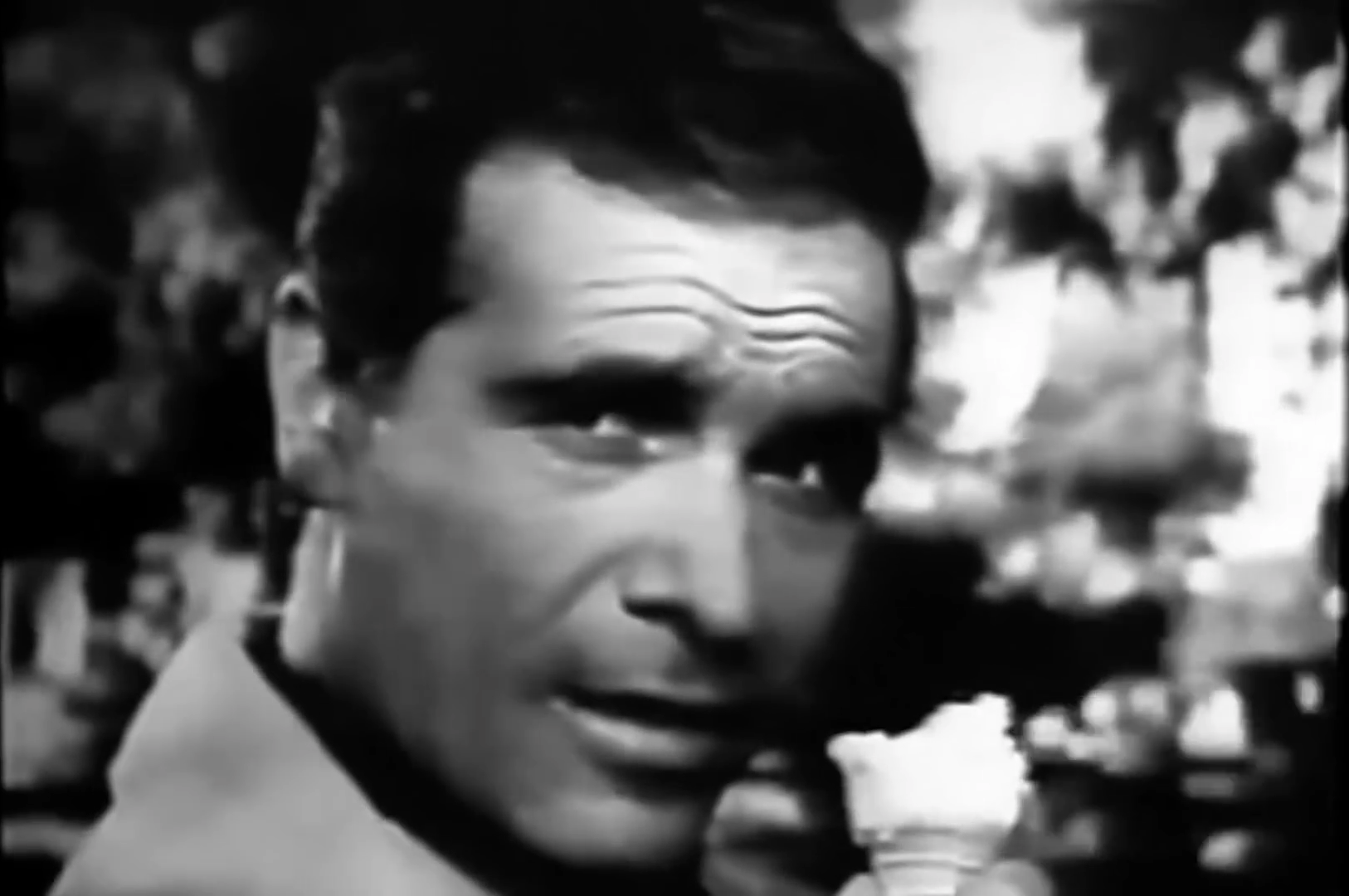
Augusto Roa Bastos would continue to write screenplays, including a segment in the horror
anthology film, Demon in the Blood (1964), and would work again twice with Demare. He’d
write the screenplay for La Boda (1964), which is not based on one of his own stories, but
instead a novel by Spanish author Ángel María de Lera. It’s about a wedding night that seems
doomed by bloodshed. It’s the sort of film that isn’t easy to classify, but it’s very eerie and
disturbing.
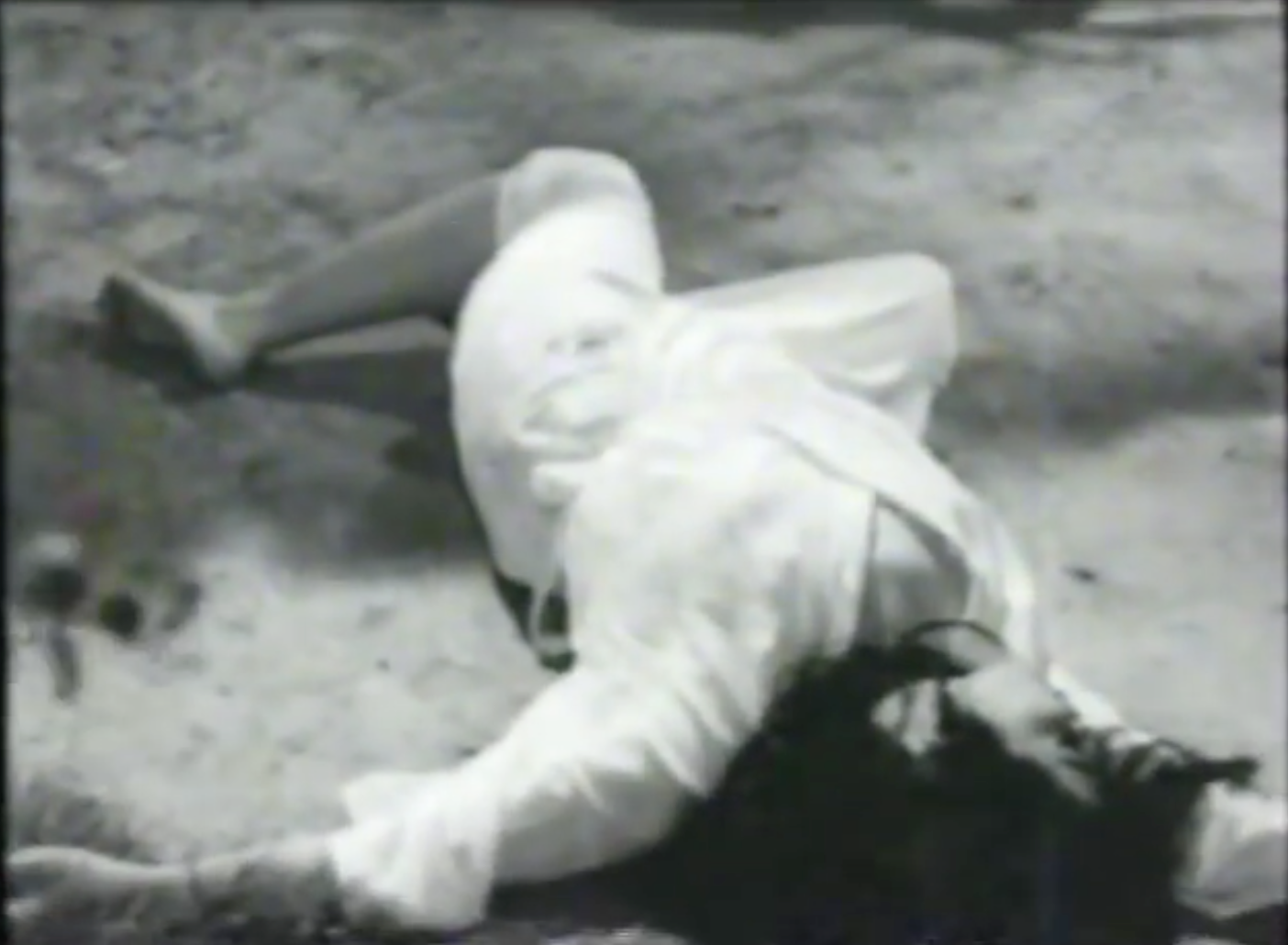
Demare’s career continued to slow down in the 1960s. Films became infrequent and often
made with budgets lower than what they warranted. Demare even made an embarrassing anti-marijuana
film a la Reefer Madness (1936), though I wouldn’t fault him at all for taking what
work was available. A part of that was the decline in the Argentine film industry as a whole, but
it seems that critical interest in Demare’s work also waned. With his strong sense of craft and
cinematic convention, it’s easy to imagine Demare being considered antiquated by the 1960s.
There’s a classiness to Demare’s films that just seems out of step or old fashioned when you
remember that the later ones were being released at the same time as the films of someone
like the brilliant enfant terrible of Brazilian cinema, Glauber Rocha. Believe it or not, Demare
would outlive Rocha who died suddenly and tragically at age 42 in 1981... if only by two weeks.
It’s a bit like being reminded that Louis Armstrong outlived Jimi Hendrix.
The final film Roa Bastos would write for Demare would be La Madre María (1974), which is a
period drama based on the life of a Spanish woman who dedicated herself to helping
Argentina’s sick and poor. The film is bittersweet both for its story, as well as the fact that it
comes more or less at the end of both Roa Bastos’ and Demare’s film careers. As with many other Argentine filmmakers, the infamous 1976 coup d’état, where right-wing generals seized power, was a harsh turning point.
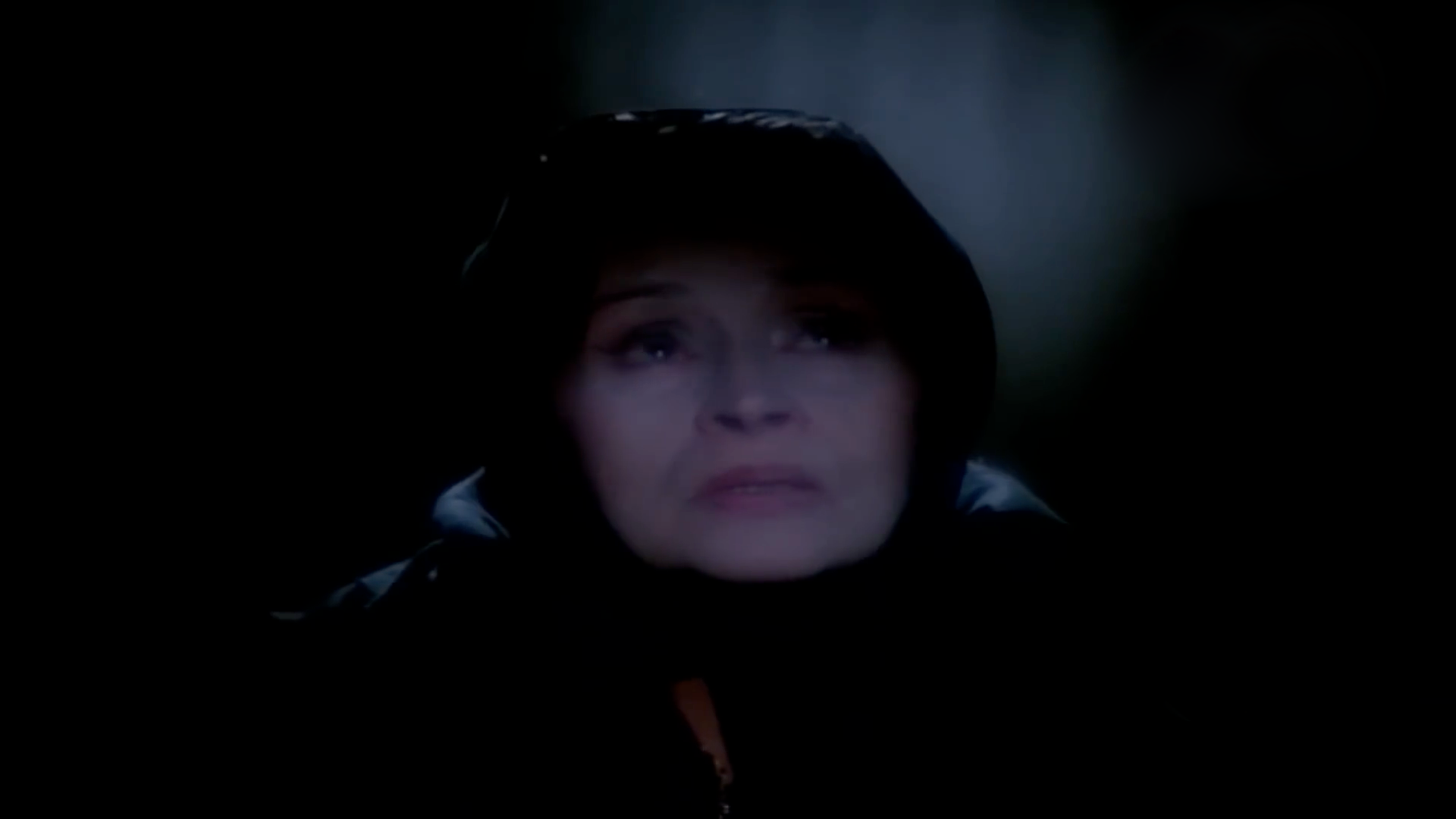
Roa Bastos would become one of the most celebrated Latin American authors, with his
screenwriting career (coming to a grand total of twelve films, with two other films not written by
him but based on his stories) viewed more as a curious blip in a formidable literary legacy.
While he’d never win a Nobel Prize in literature, he was often name-dropped as a likely
candidate, and he did win the prestigious Premio Cervantes prize for what is generally
considered to be his masterpiece, the 1974 novel I, the Supreme (the only novel of his that’s
available in English, and is newly back in print!). It’s about the historical figure, Dr. José Gaspar
Rodríguez de Francia, who was an archetypical South American despot, and held the title of
"Supreme and Perpetual Dictator of Paraguay” (and who was also a major inspiration for
Joseph Conrad’s seminal novel, Nostromo). Roa Bastos considered it and Hijo de Hombre, to
be part of a trilogy which he completed with his 1993 novel El Fiscal, which is about an attempt
to assassinate the Paraguayan dictator Alfredo Stroessner. After the 1976 coup, he’d leave
Argentina for Europe. He’d be given honorary Spanish citizenship, though he’d spend most
of his later years in France, working as a professor and writing.
In one of his last interviews, Demare would bemoan the state of the Argentine film industry, and
discuss the need for something better:
I have many projects that I would like to make, but I am waiting for the state of cinema in my
country to change. I think we need to make an important cinema, a cinema like the one we've
had, which, with some exceptions, has been neglected. As the country goes forward, our
cinema must also move forward. I hope they will give us a little more freedom in terms of
subject, so that we are not so restricted in important things. The country can not sustain itself
with a cinema like the one we are making. I understand that sexy or irrelevant movies are
necessary in any film industry. But I also believe that the industry should not be only that. I think
theme is now very limited…I believe that the country is capable. It is a mature country. It has
good writers, good actors, good directors, good technicians. The technical conditions have
improved a lot in the country, they are not of the came same quality as when I started making
films, but the materials have been quite modernized. The quality of our technicians is
demonstrated clearly; many technicians are working with great success abroad, like Ricardo
Aronovich, who is a valuable director of photography; or Lalo Schifrin an excellent composer; or
actors like Hector Alterio, who lives here, but is still linked to Europe.
I insist that we have a wealth of important people in all aspects. That is why we are obliged to
make an important cinema, a cinema that brings people back to Argentine theatres. Today
people prefer to see foreign films because they address issues that the public wants to see.
Many people even cross the river to Montevideo to see movies that aren’t shown here. And I do
not know why you can not see them. Because aside from the prohibition for minors under
eighteen, enough is enough. Let us see, because we are adults. I clarify that I'm not interested
in pornography. I'm talking about deep issues. The cinema is an important part of our culture.
It’s too bad Demare didn’t live to see the New Argentine Cinema, and the ascent of Argentine
filmmakers like Lucrecia Martel and Lisandro Alonso. I think they fulfilled that need for an
important cinema by creating mature and challenging films.
In that excerpt Demare also touched on an issue that I think is still at the centre of the fate of
classic Argentine cinema. So many of the films I watched while writing this seem terribly
neglected. They’re crying out for rediscovery, reappraisal, and restoration. Hijo de Hombre
especially, as it’s better than the run of the mill ‘forgotten masterpiece’.
Now we reach the end of the road, and like life; the path may have been winding, but the
destination is certain.
~ AUGUST 8, 2019 ~
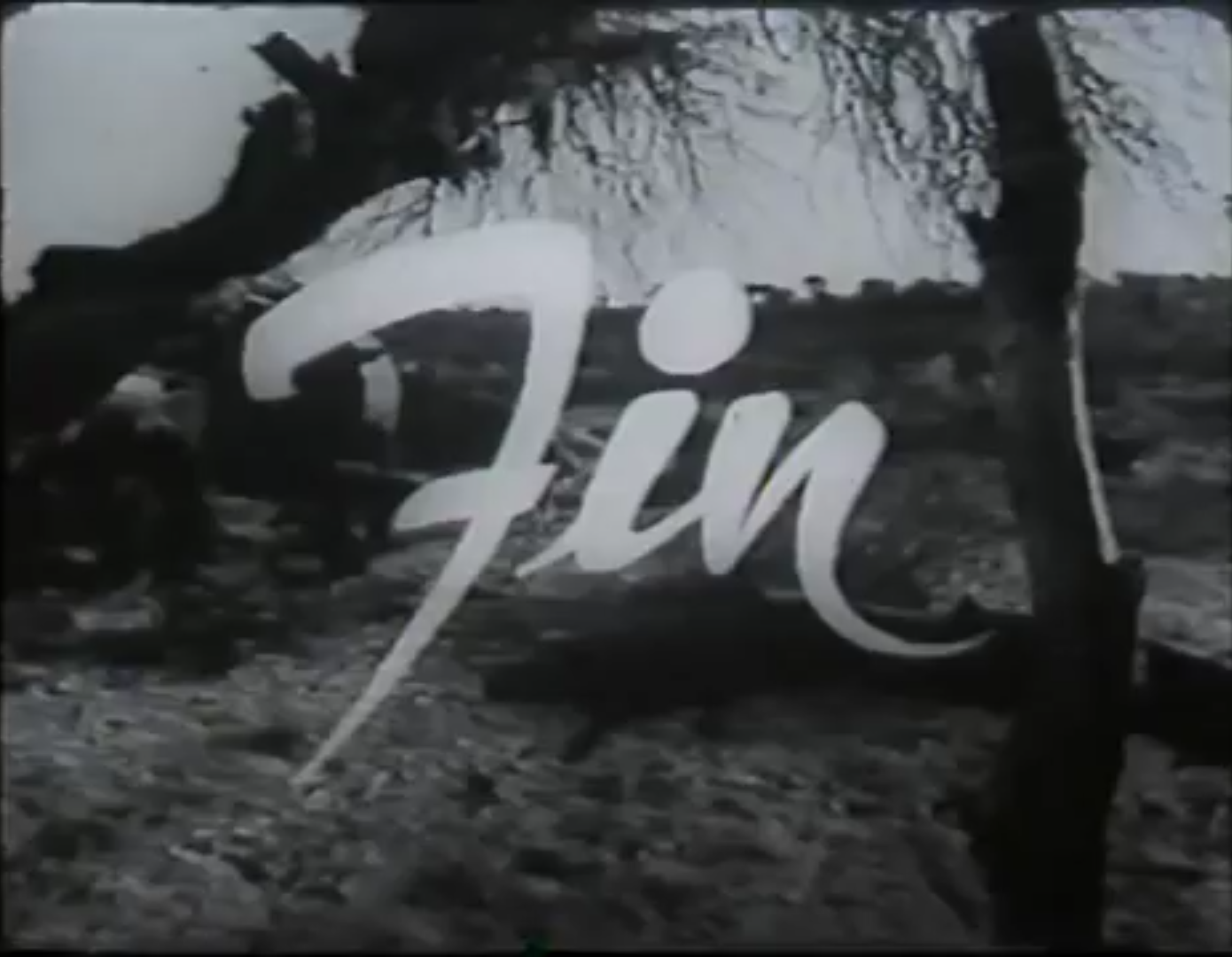
1 Roa Bastos had written an earlier novel, El Fiscal, which he destroyed before publication. He
then later wrote a different version of the novel from memory, which would eventually be
published in 1993.
2 I was completely oblivious about the Chaco War before seeing the film, and while the
premise of fighting to the death for the oil rights to a territory with no oil, I’m not sure it’s quite
as absurd as The Football War between El Salvador and Honduras, which was triggered by, as
the name suggests, a game of football.
3 I just wanted to sneak in that Armando Bó is the grandfather of screenwriting cousins Armando Bó & Nicolás Giacobone, who won an academy award for Birdman (2014).
4 Martha of the Lowlands would eventually be adapted to film in Germany. The end result
would be Tiefland (1954) directed by the notorious Leni Riefenstahl.
5 Rabal’s other Viridiana co-star Silvia Pinal, starred in a play called La Sed, which I had
wondered might have had something to do with the film, but it turns out to be only a
coincidence, and it was simply a Spanish language production of Henri Bernstein’s La Soif.
6 I don’t know if Clouzot and Demare would have met, but they were in competition in the 1956 Cannes Film Festival, with Clouzot’s The Mystery of Picasso and Demare’s El Último
Perro.
7 Likely not an influence on Hijo de Hombre, but for anyone wants something similar from around the same time, I’d highly recommend the episode of Alfred Hitchcock Presents, titled "Escape to Sonoita" which first aired in 1960. I think a strong case could be made for it being the
best episode of the entire series. It involves an oil truck stolen by thieves who become so
thirsty they end up killing one another over a tiny bit of water, and of course it has a great ironic
twist at the end when it’s revealed that the truck was in fact carrying water rather than oil. It
features a young Burt Reynolds, Murray Hamilton (the mayor in Jaws), James Bell, and Harry
Dean Stanton. The episode was directed by Stuart Rosenberg who would go on to make Cool
Hand Luke.





















































